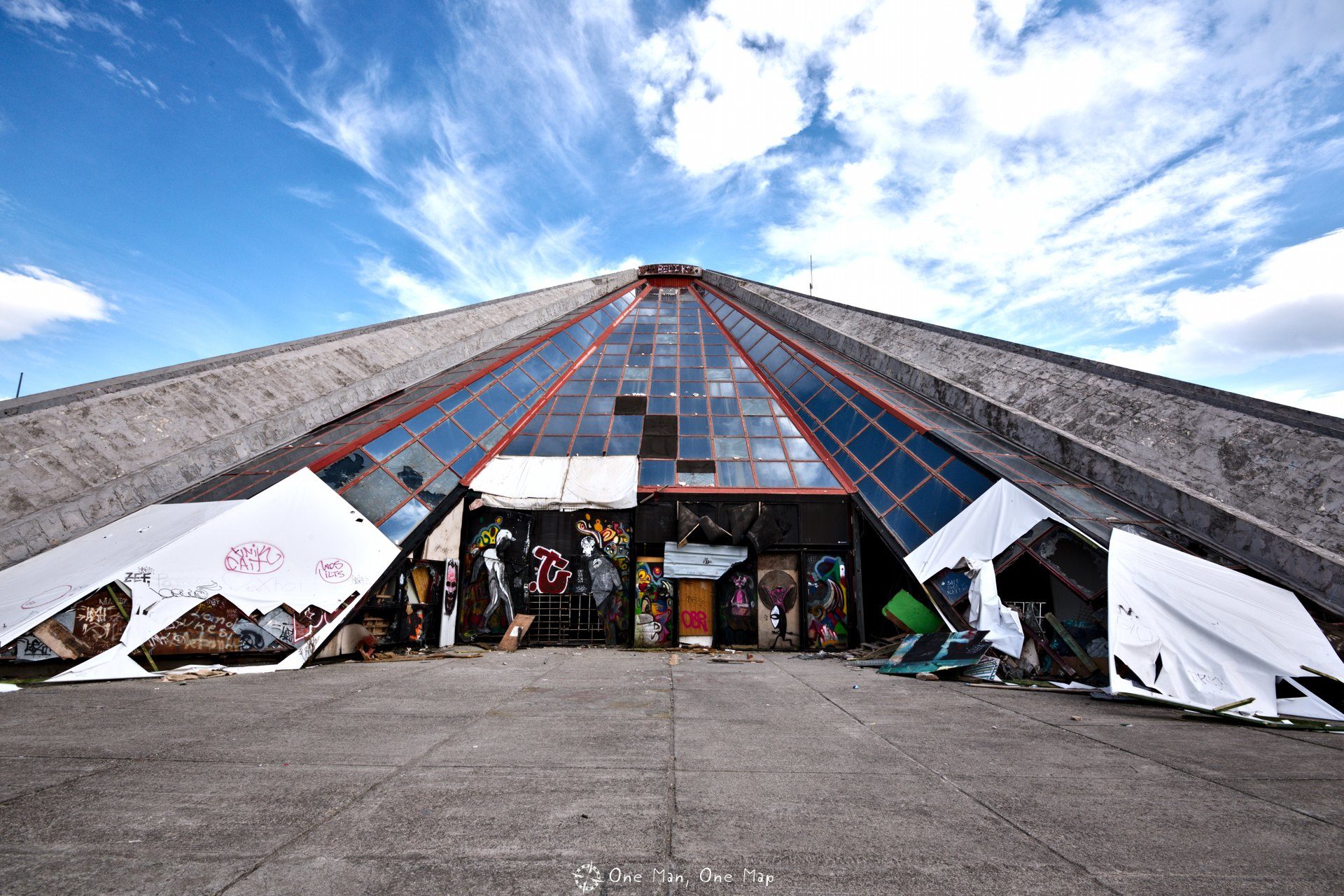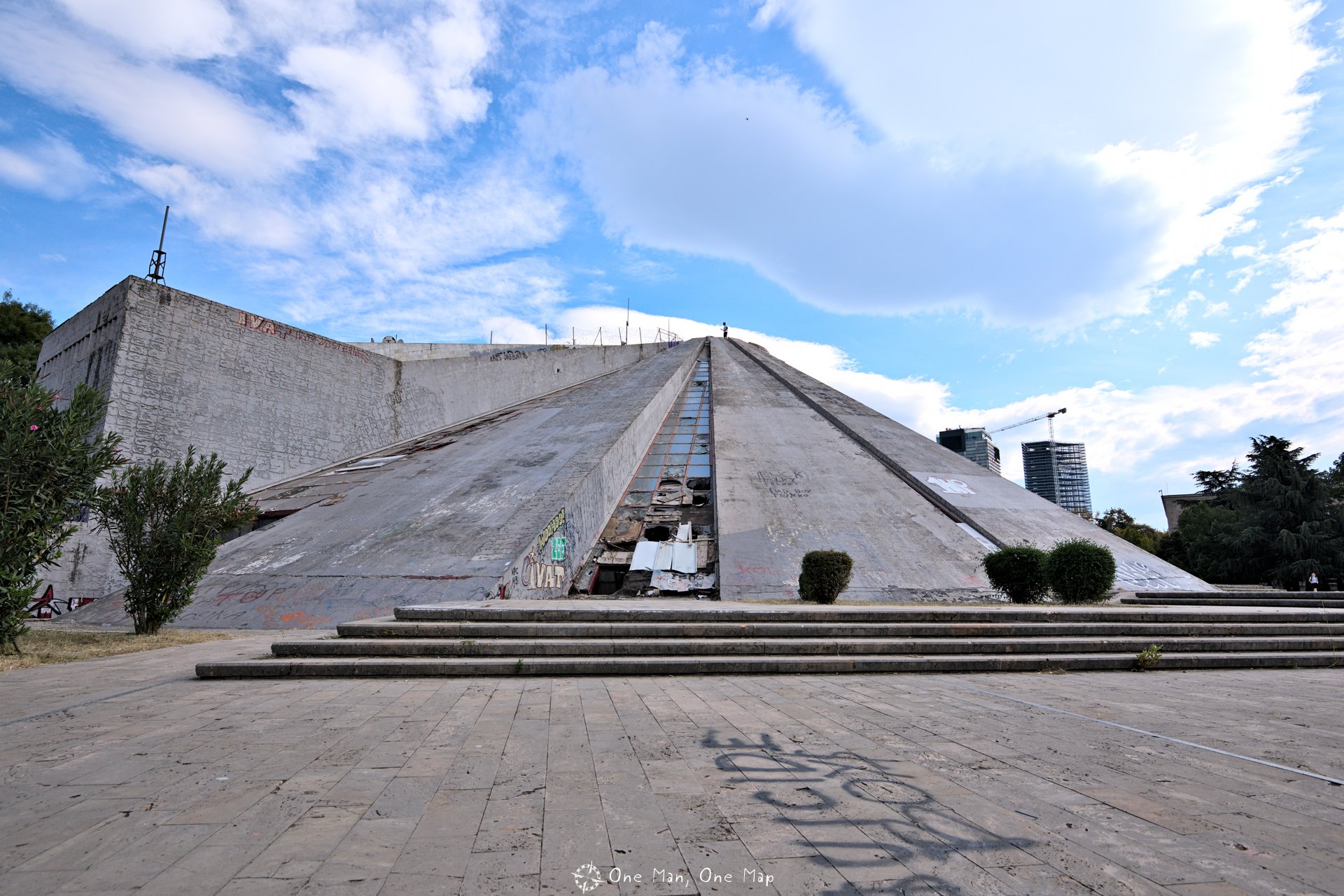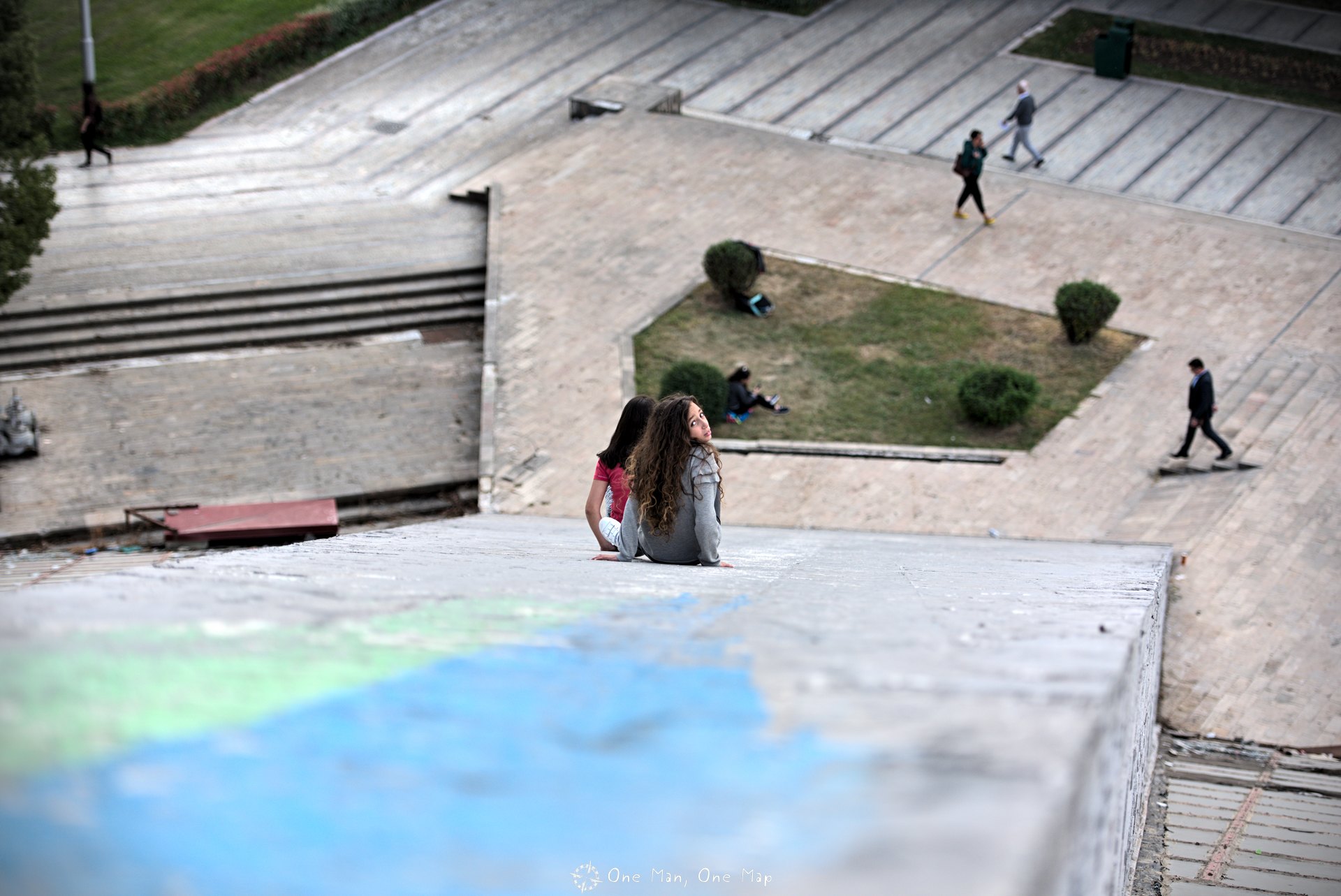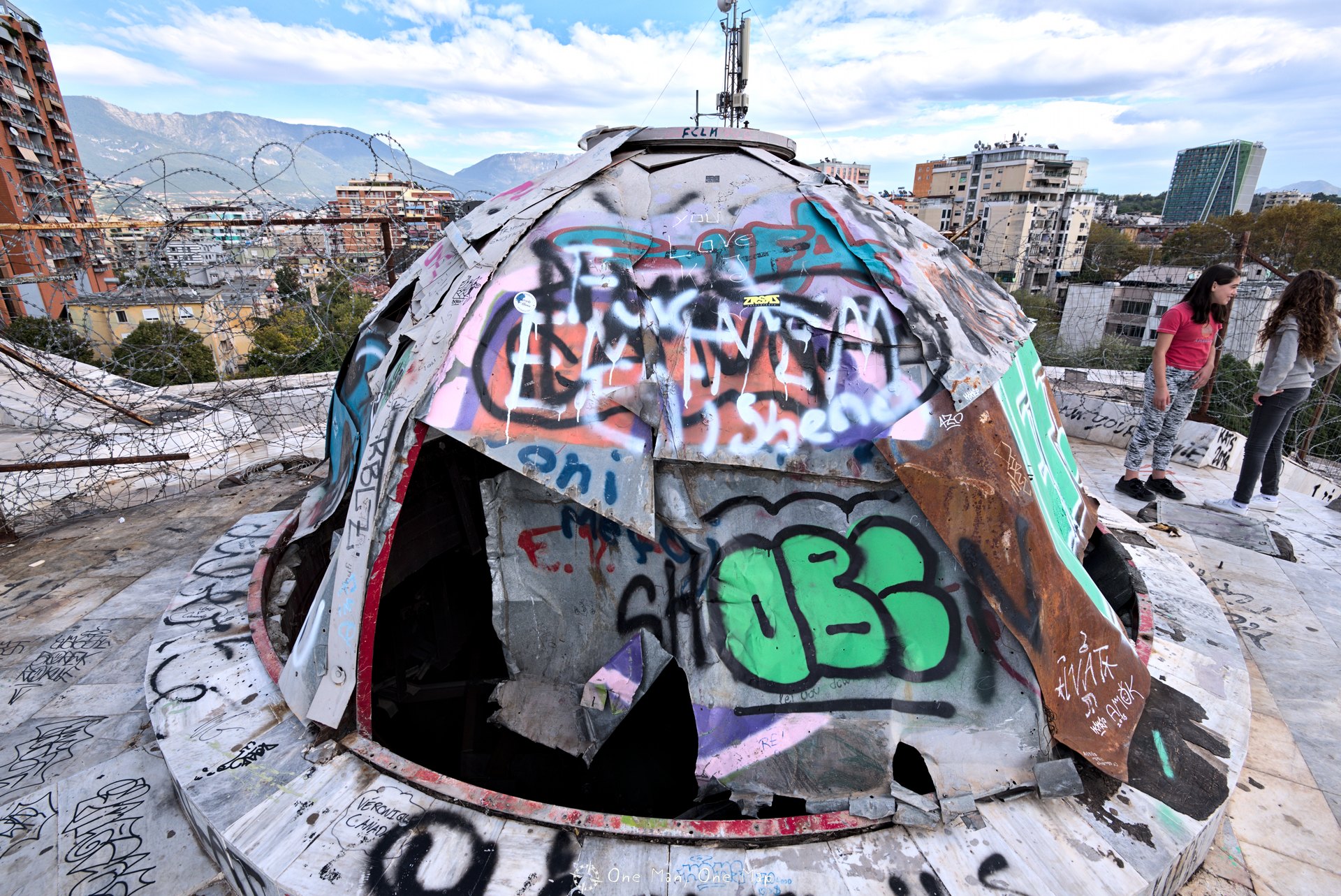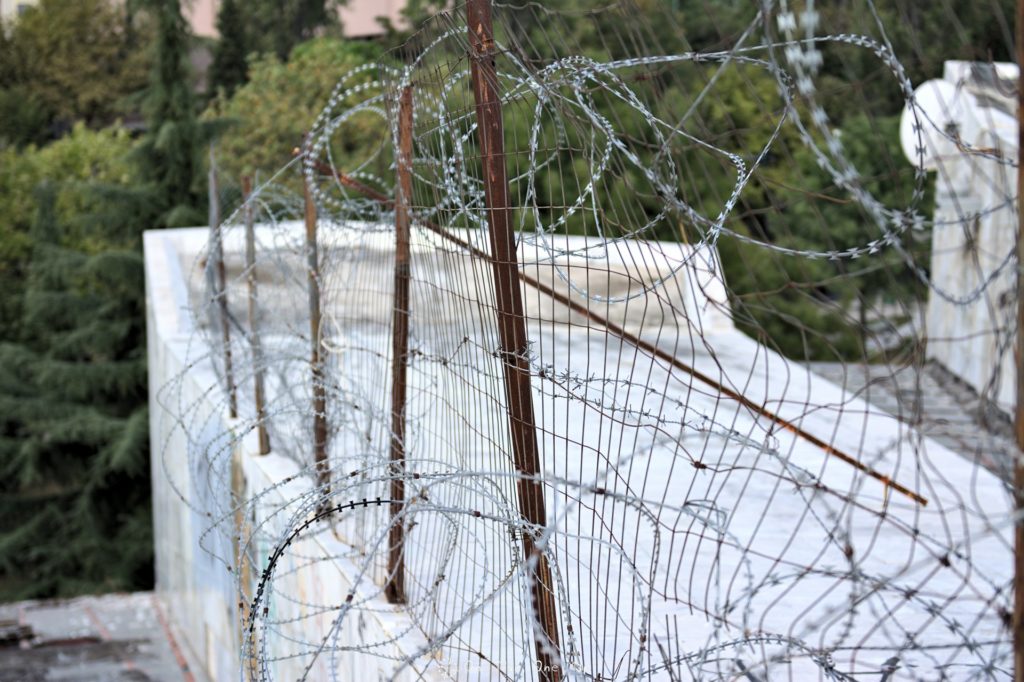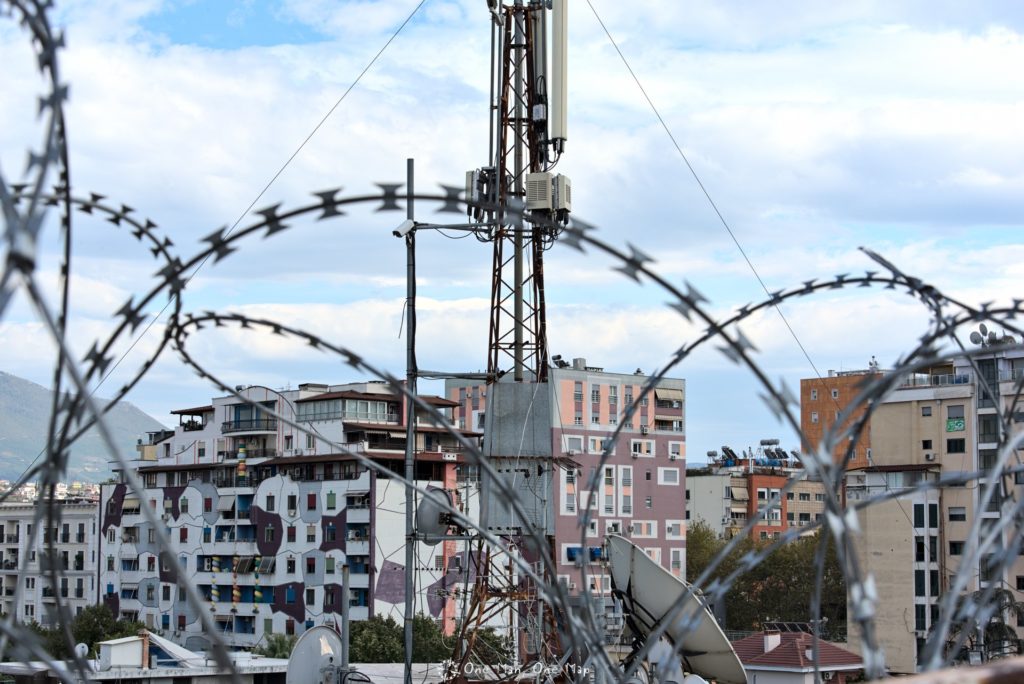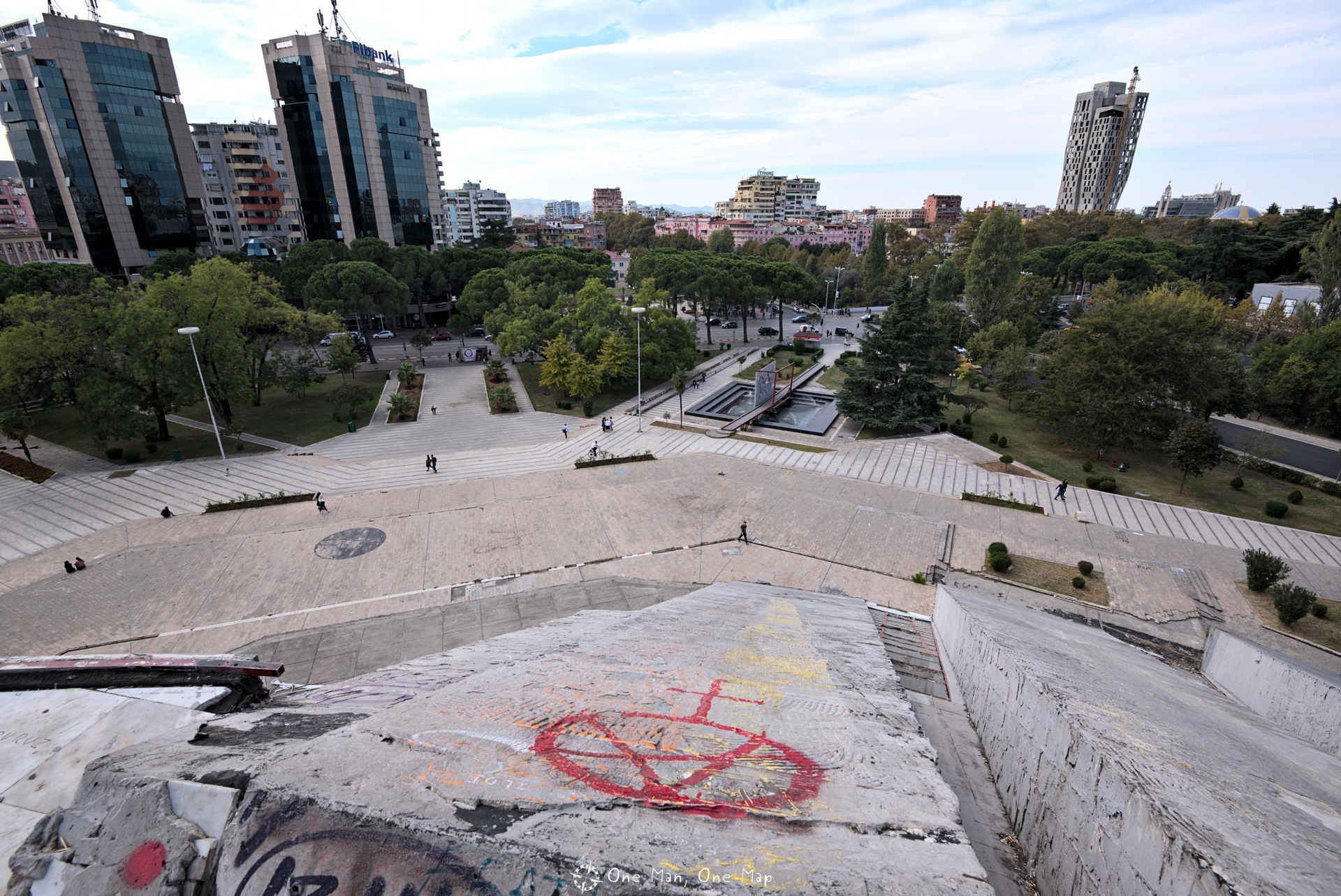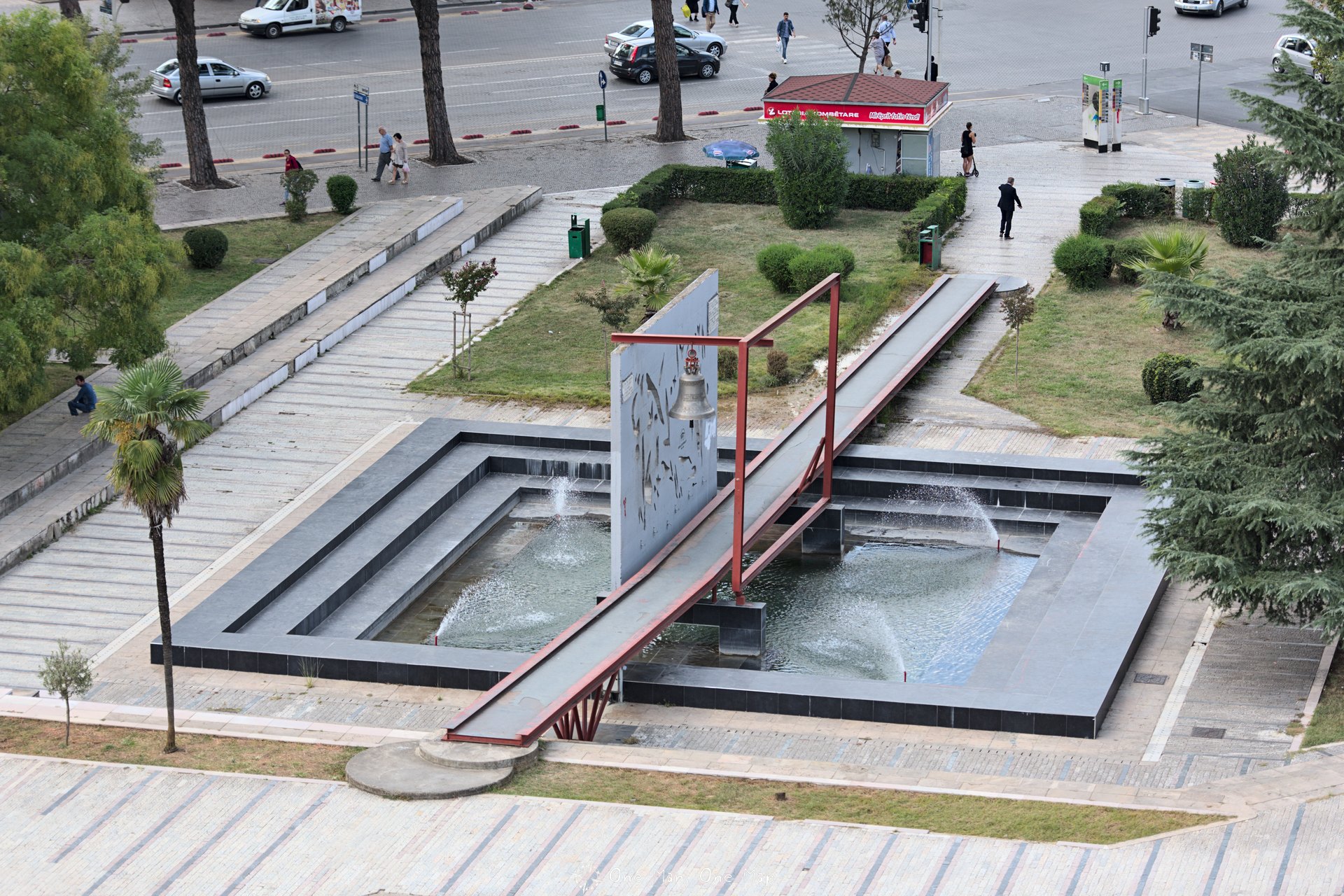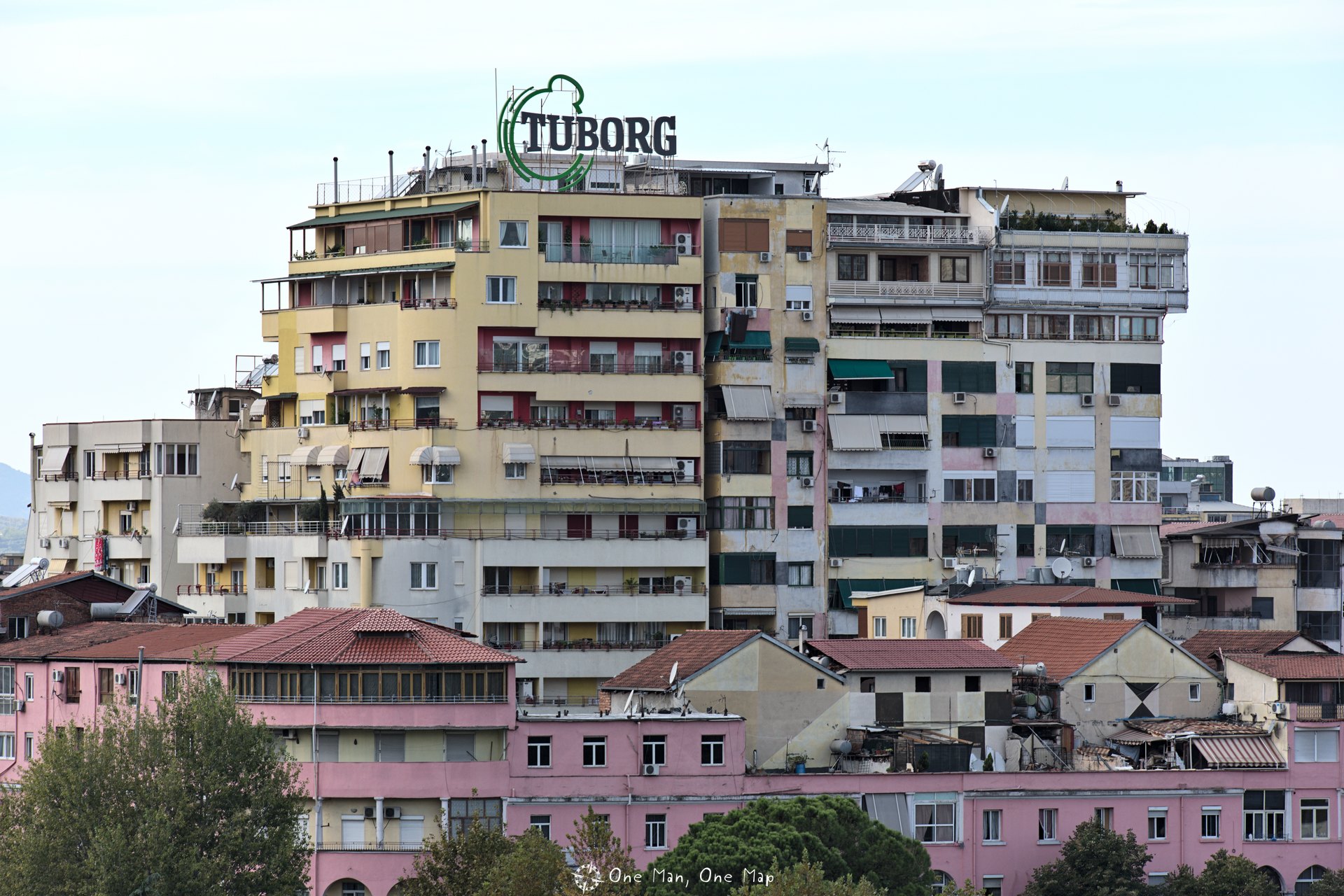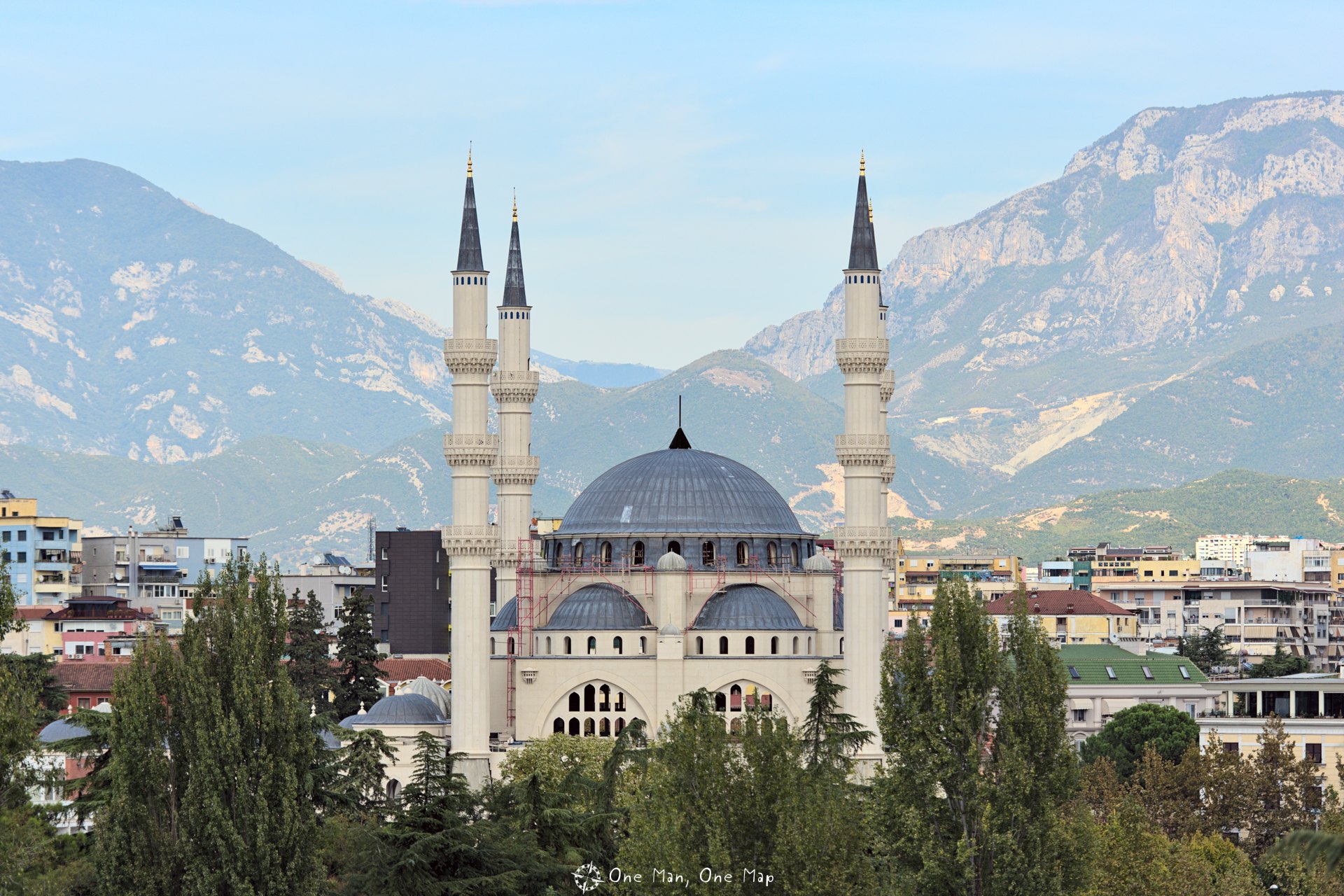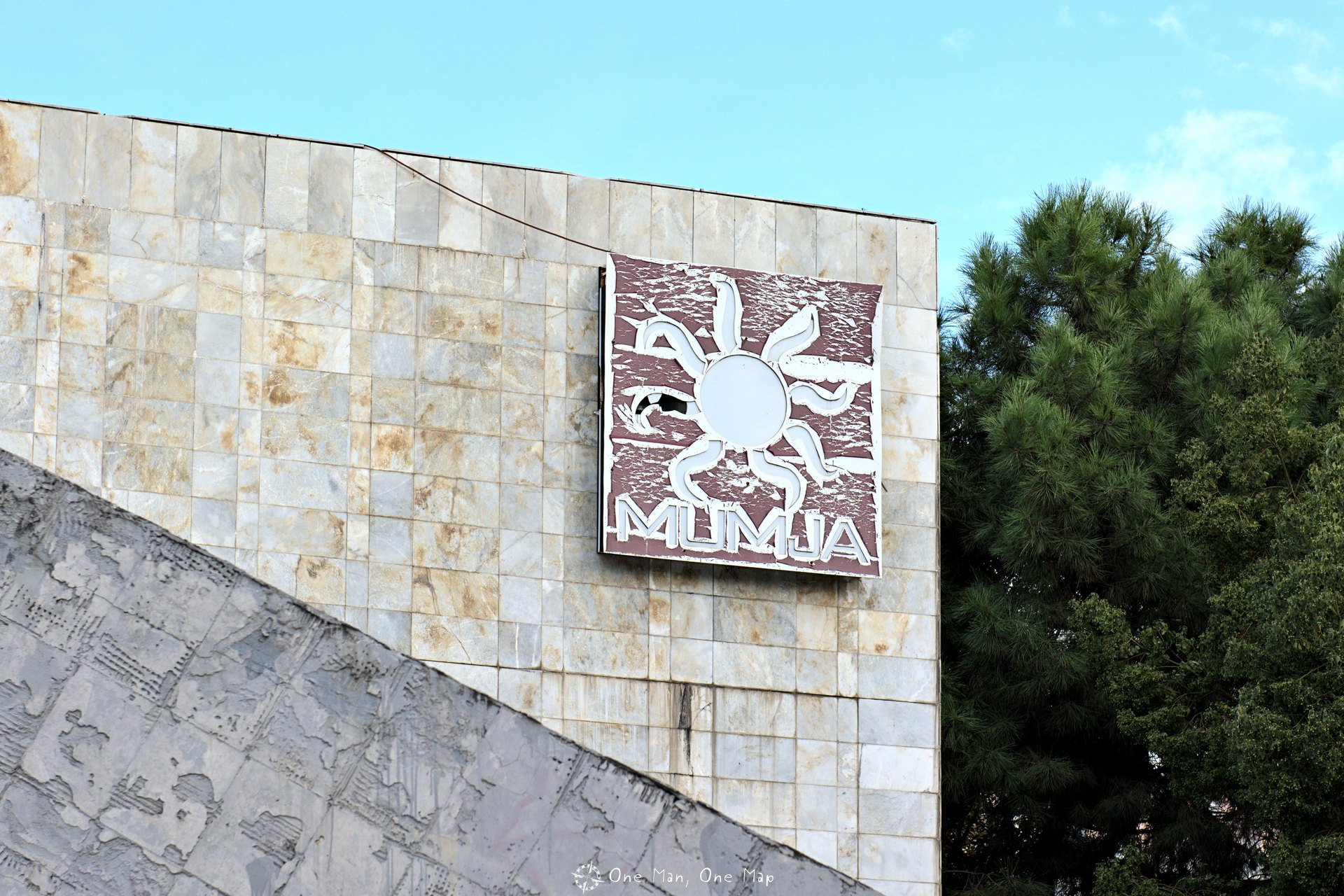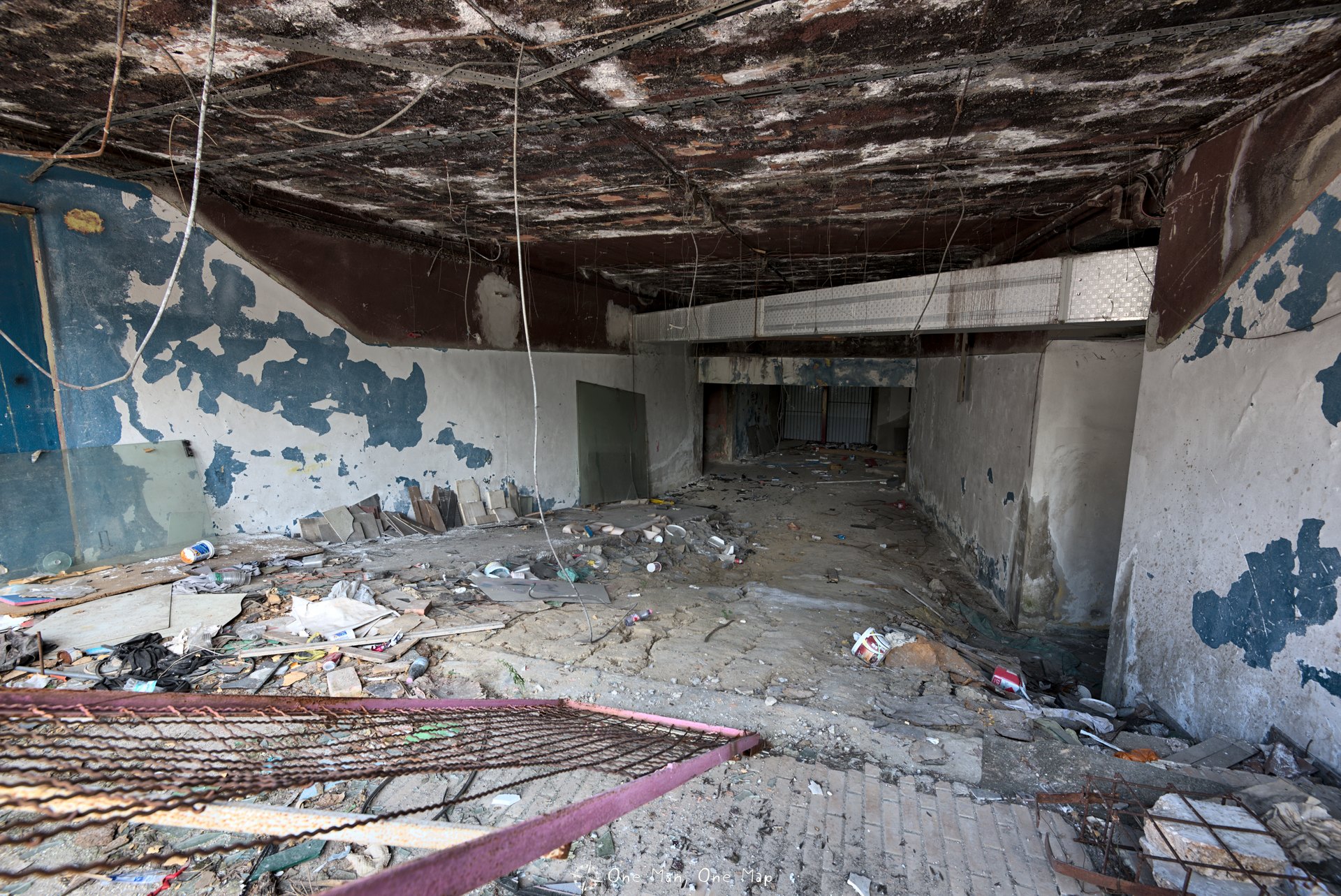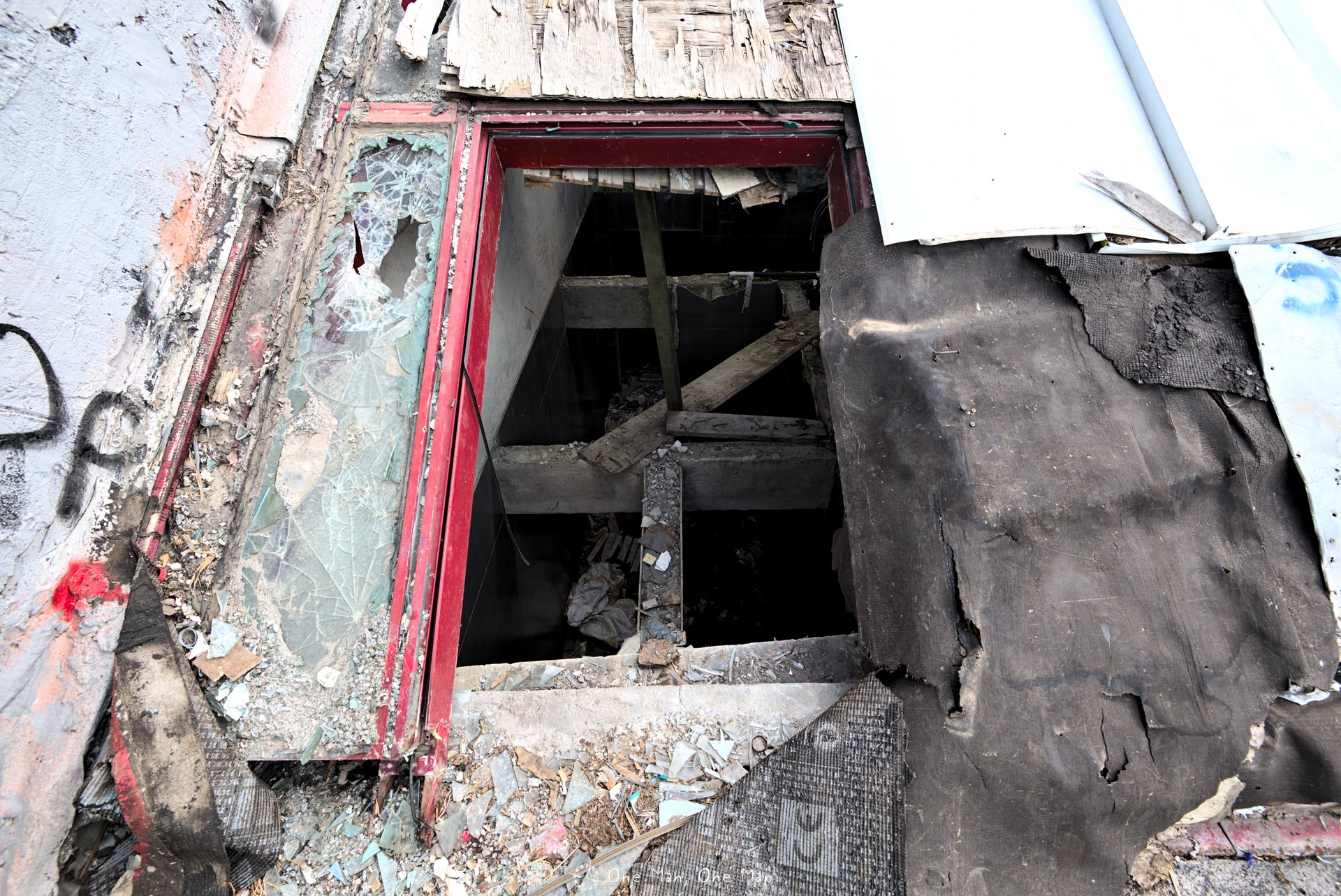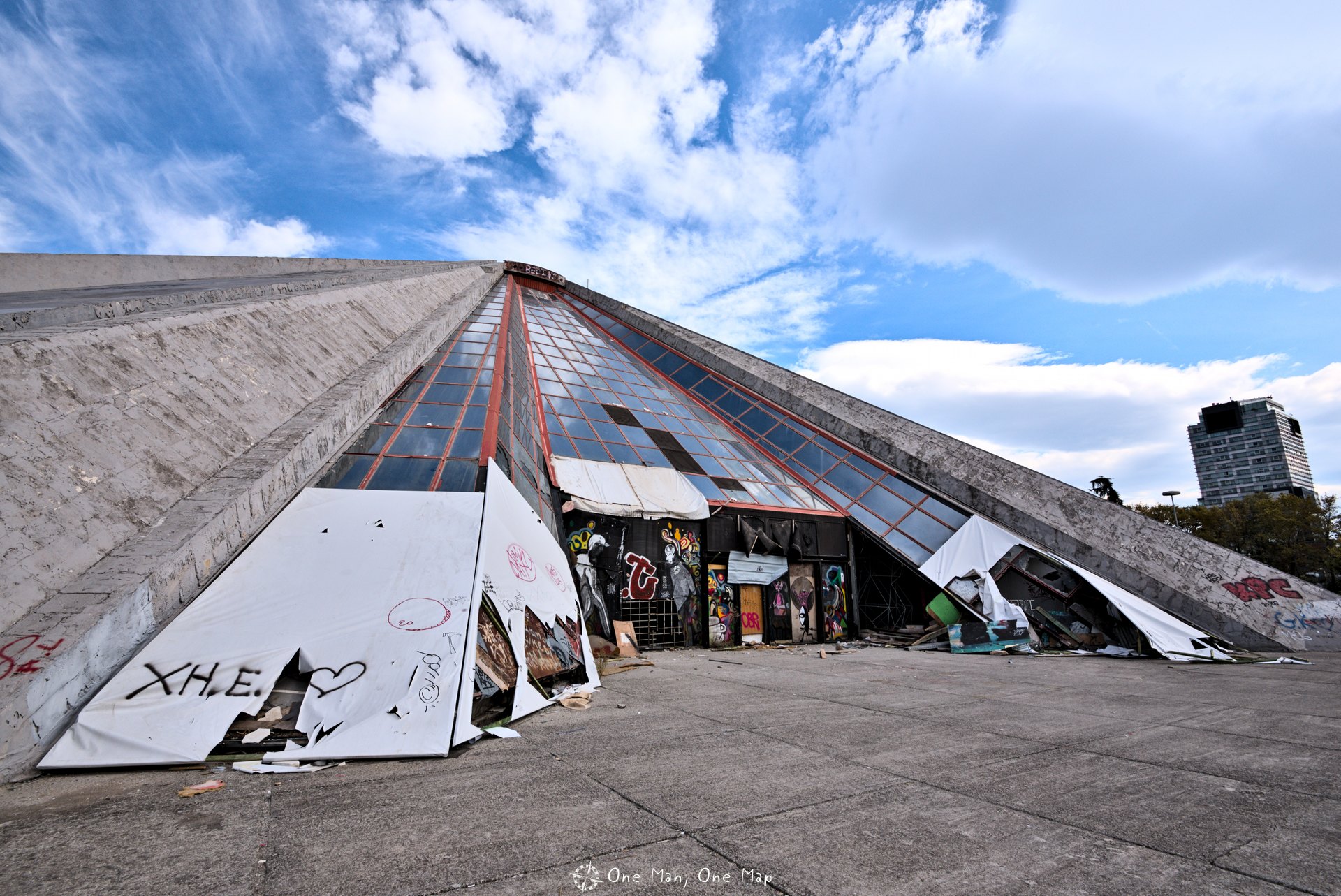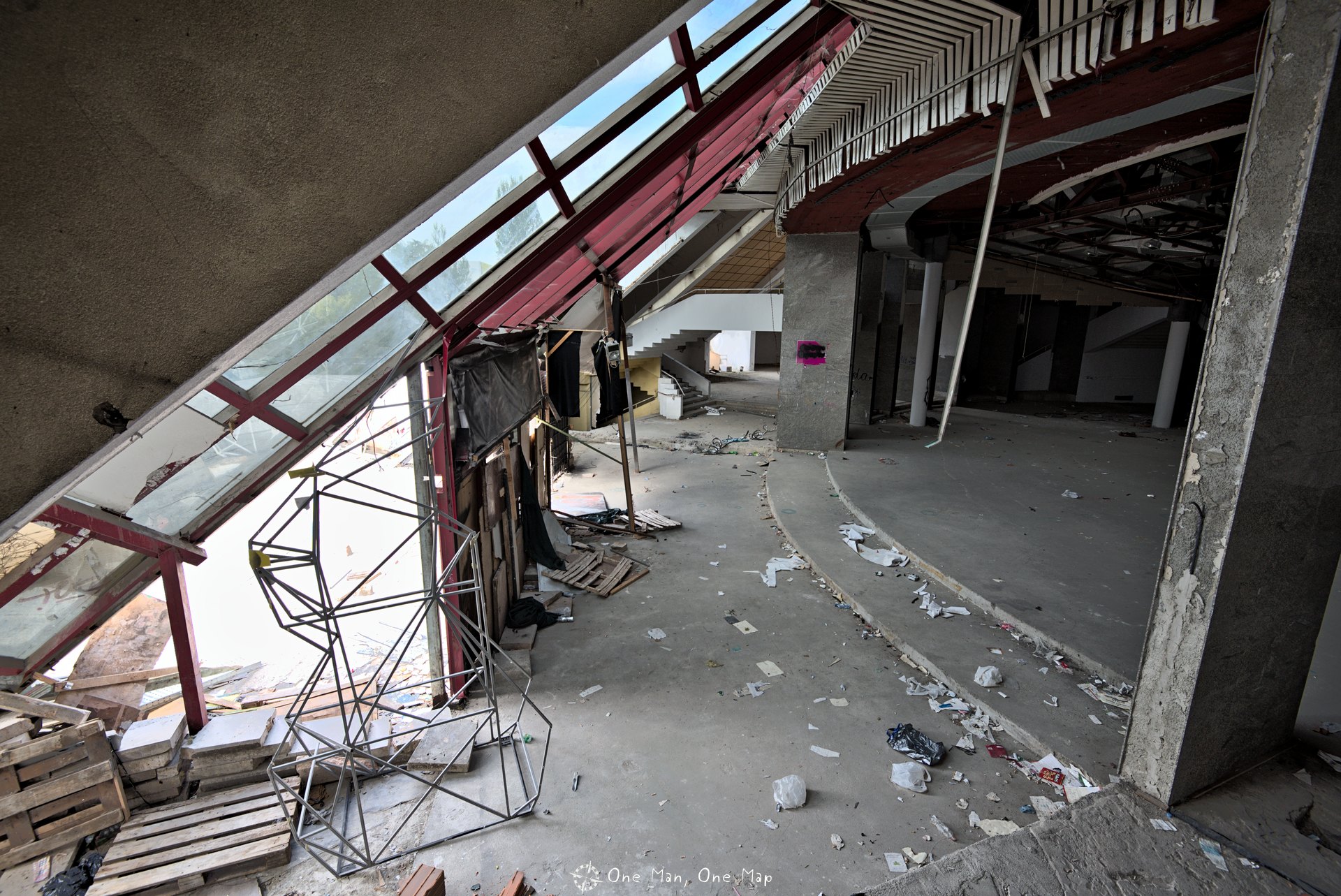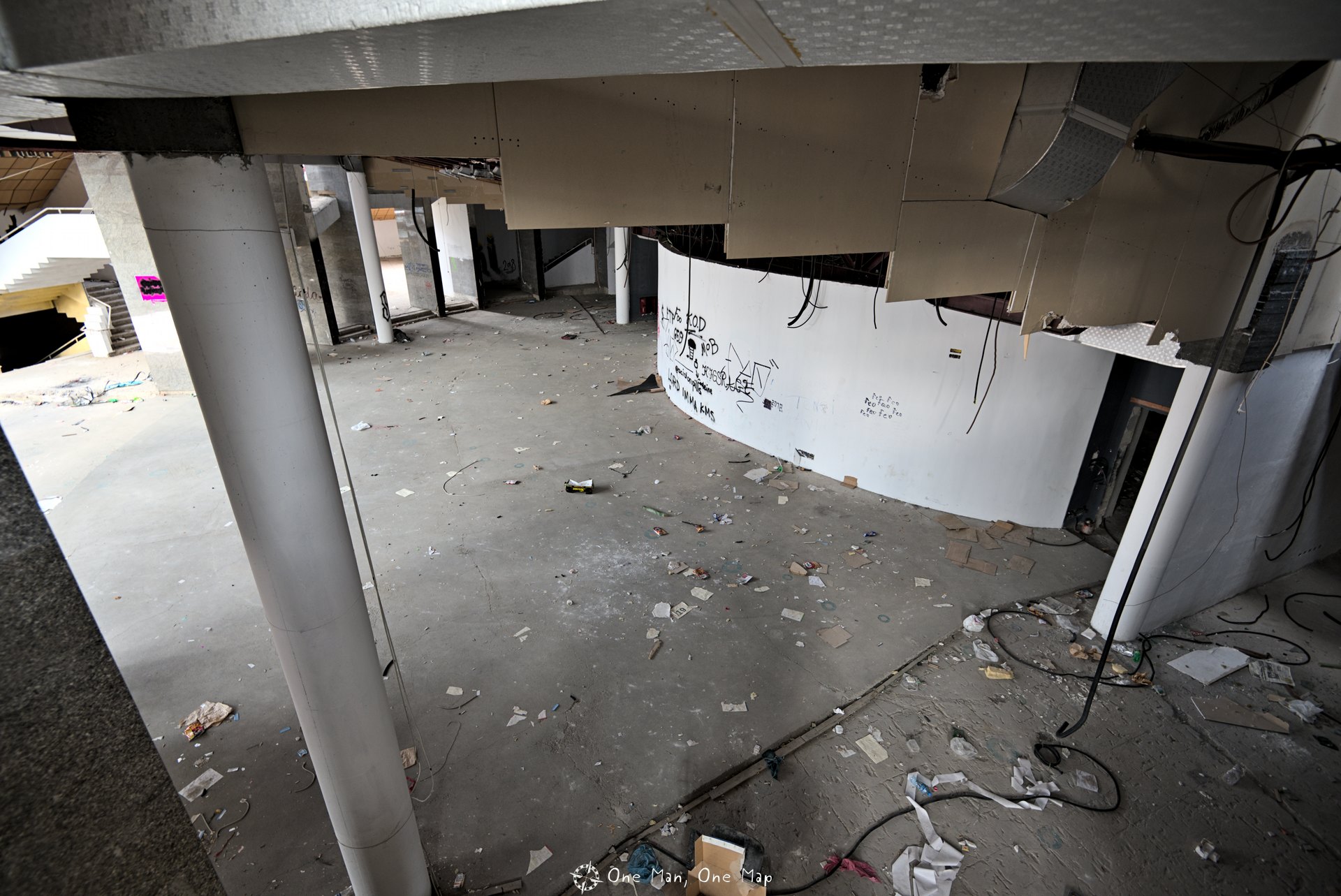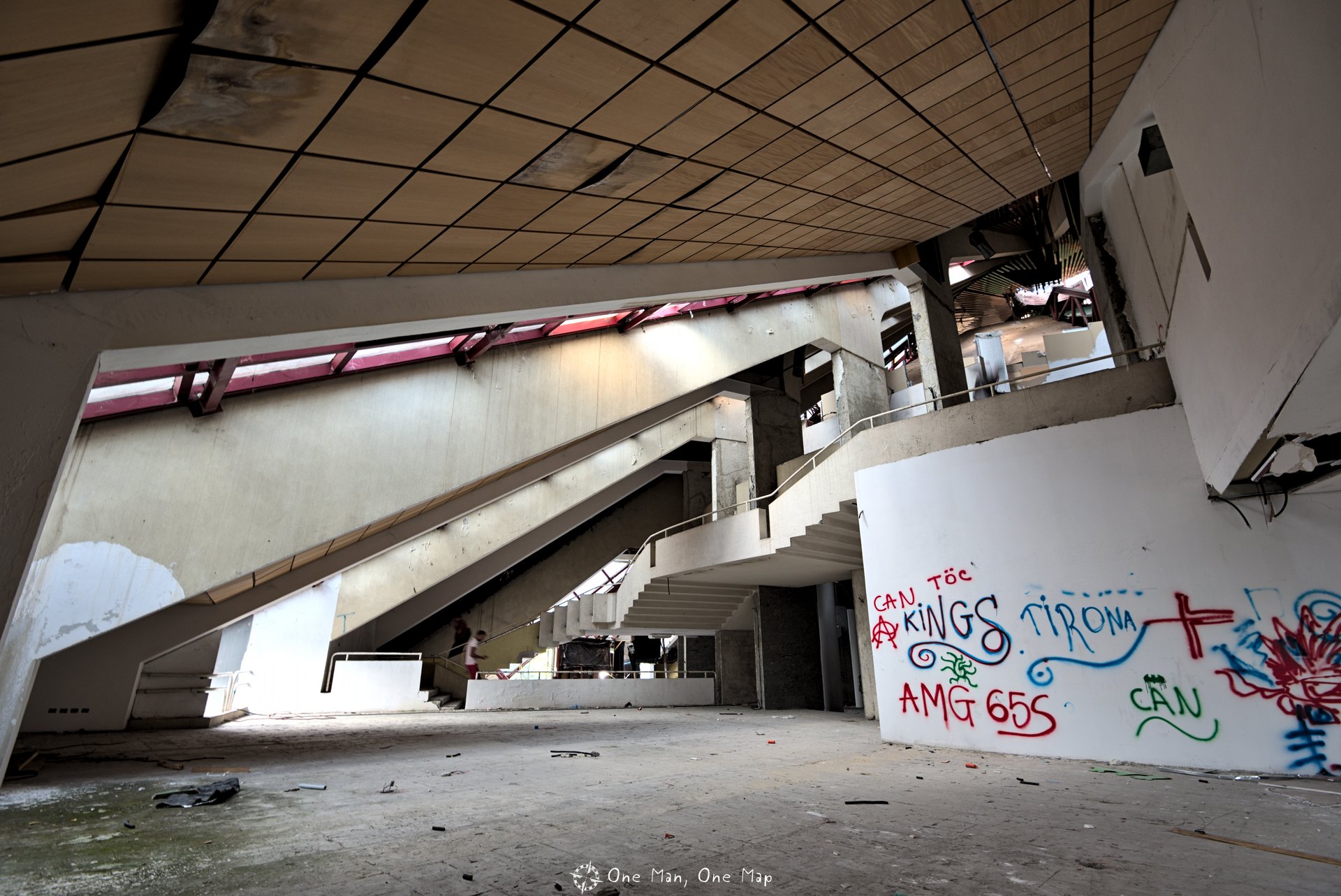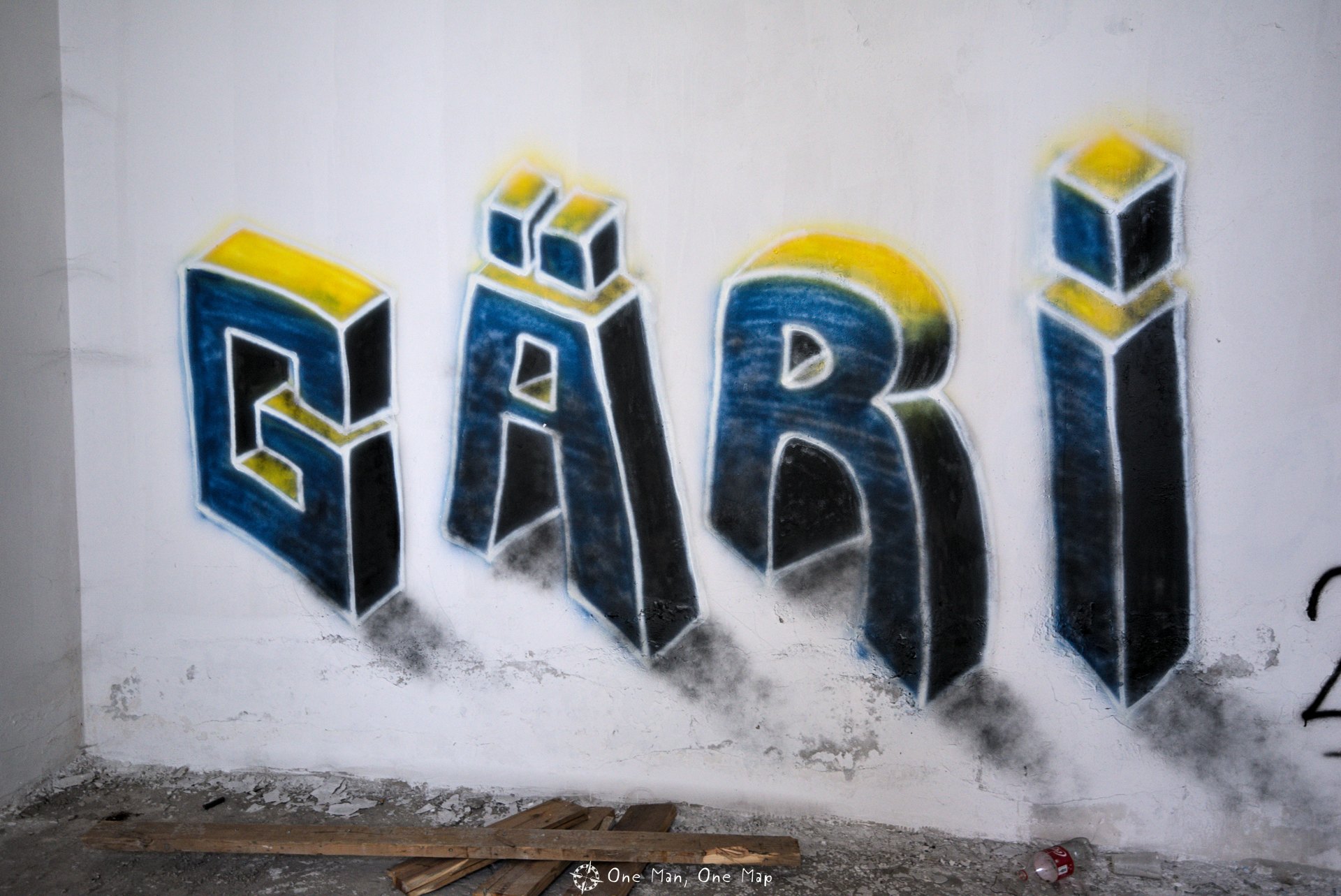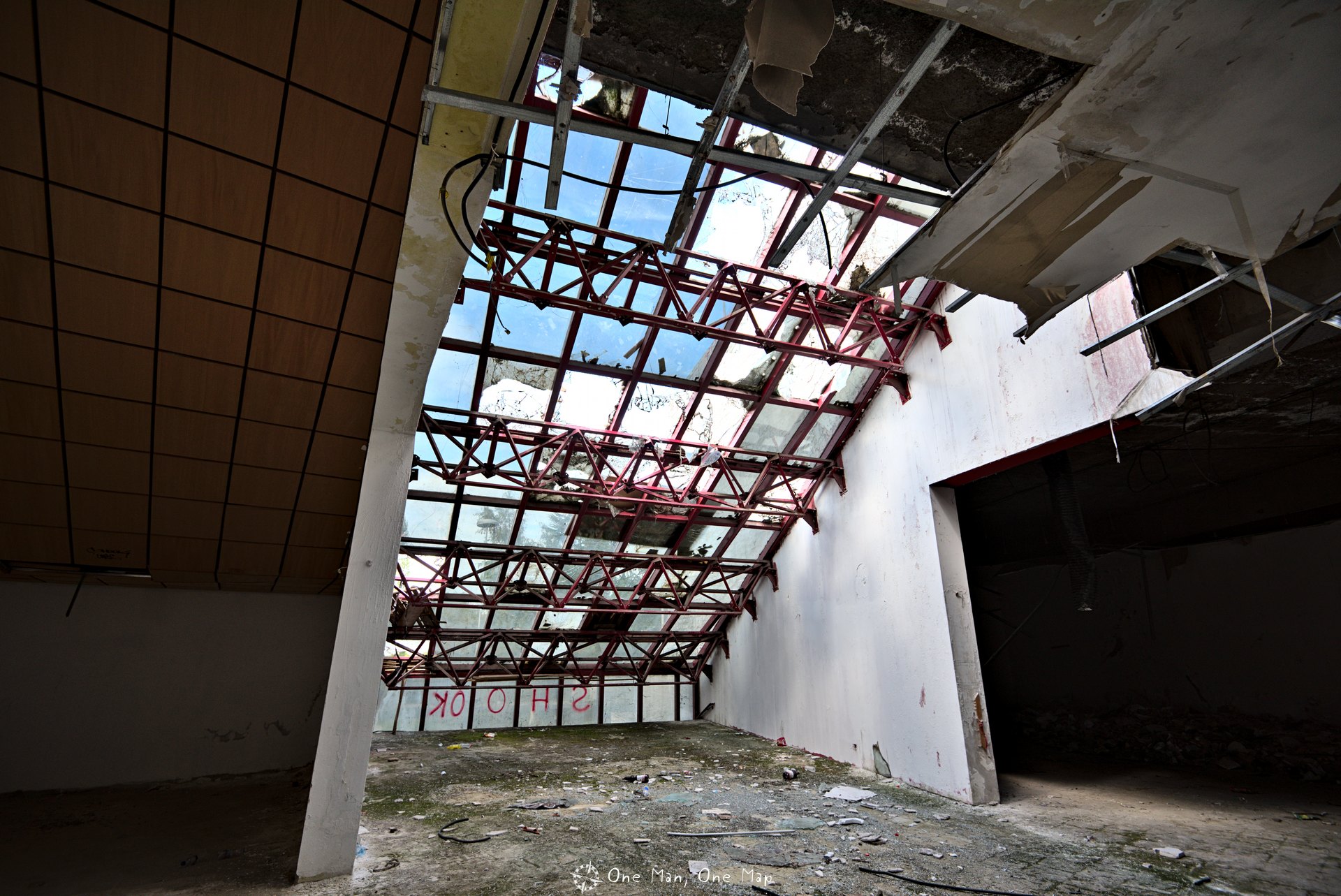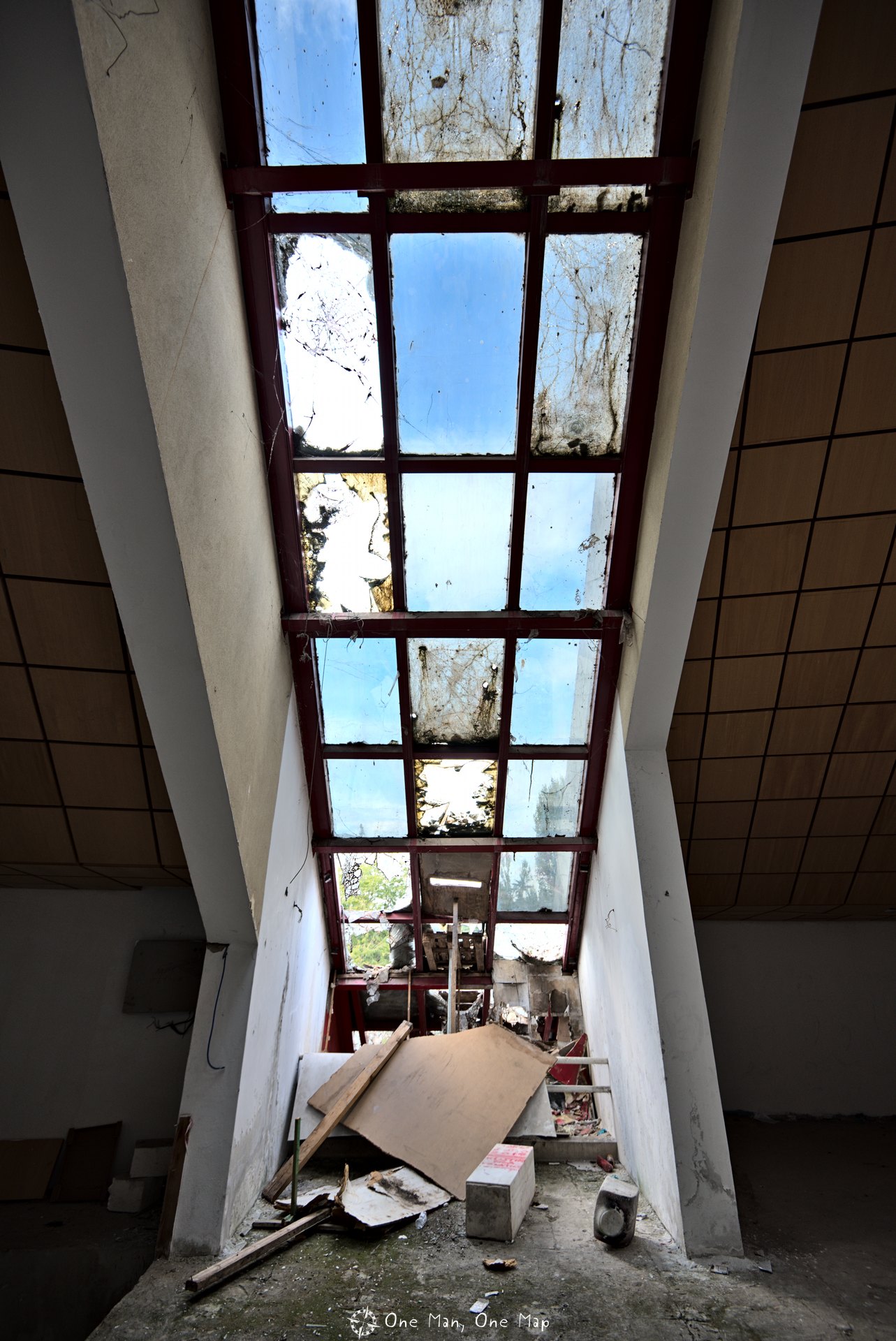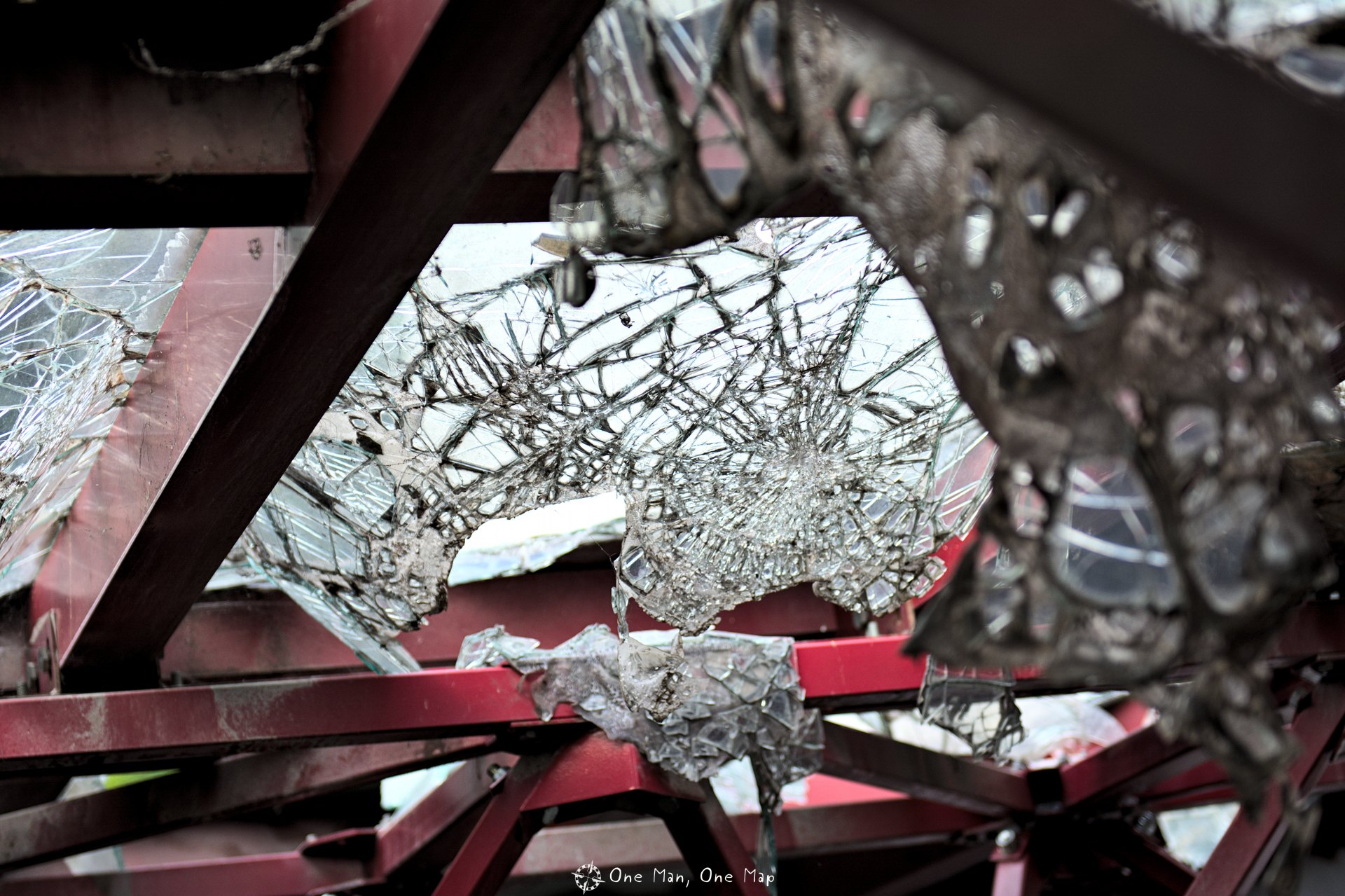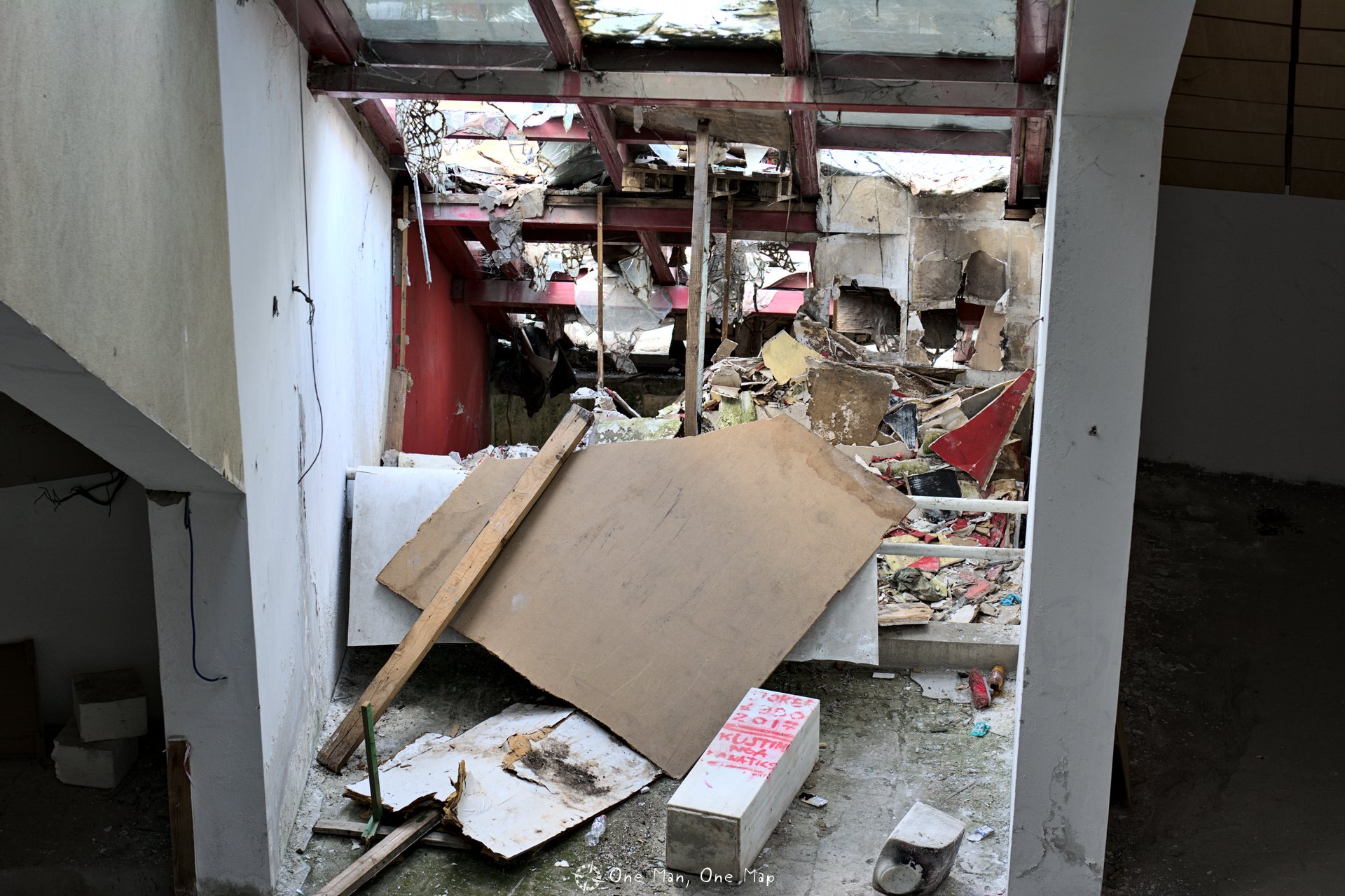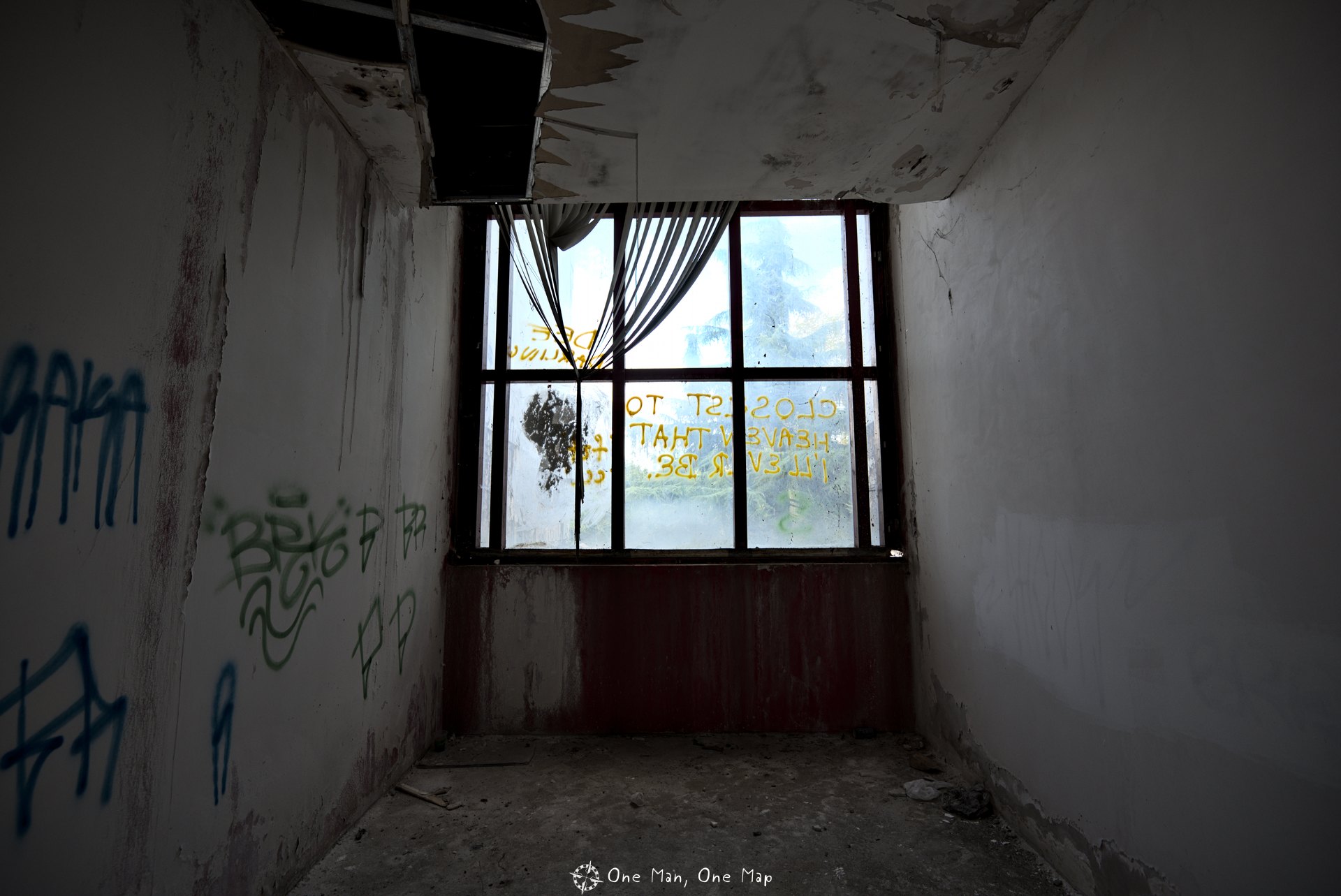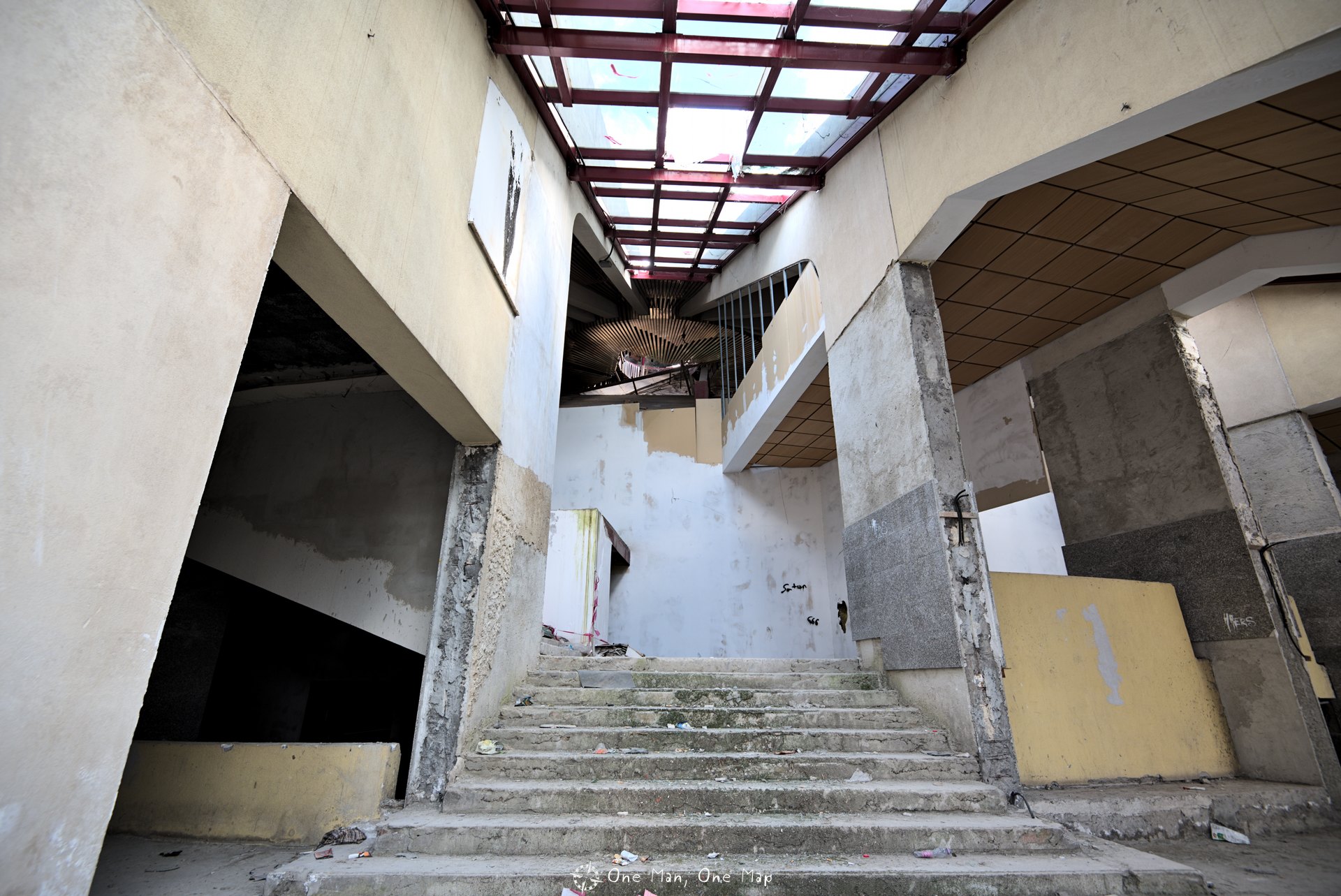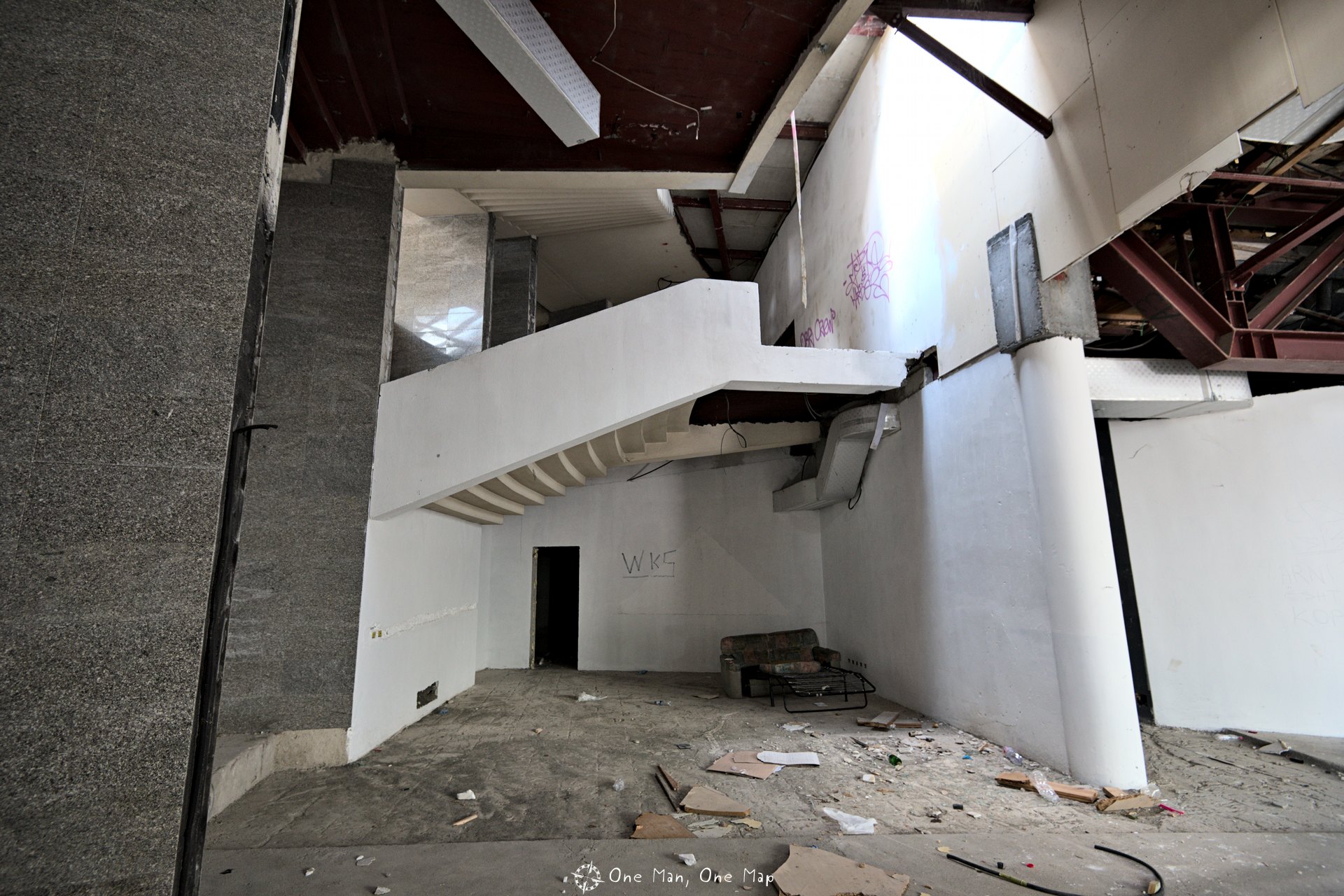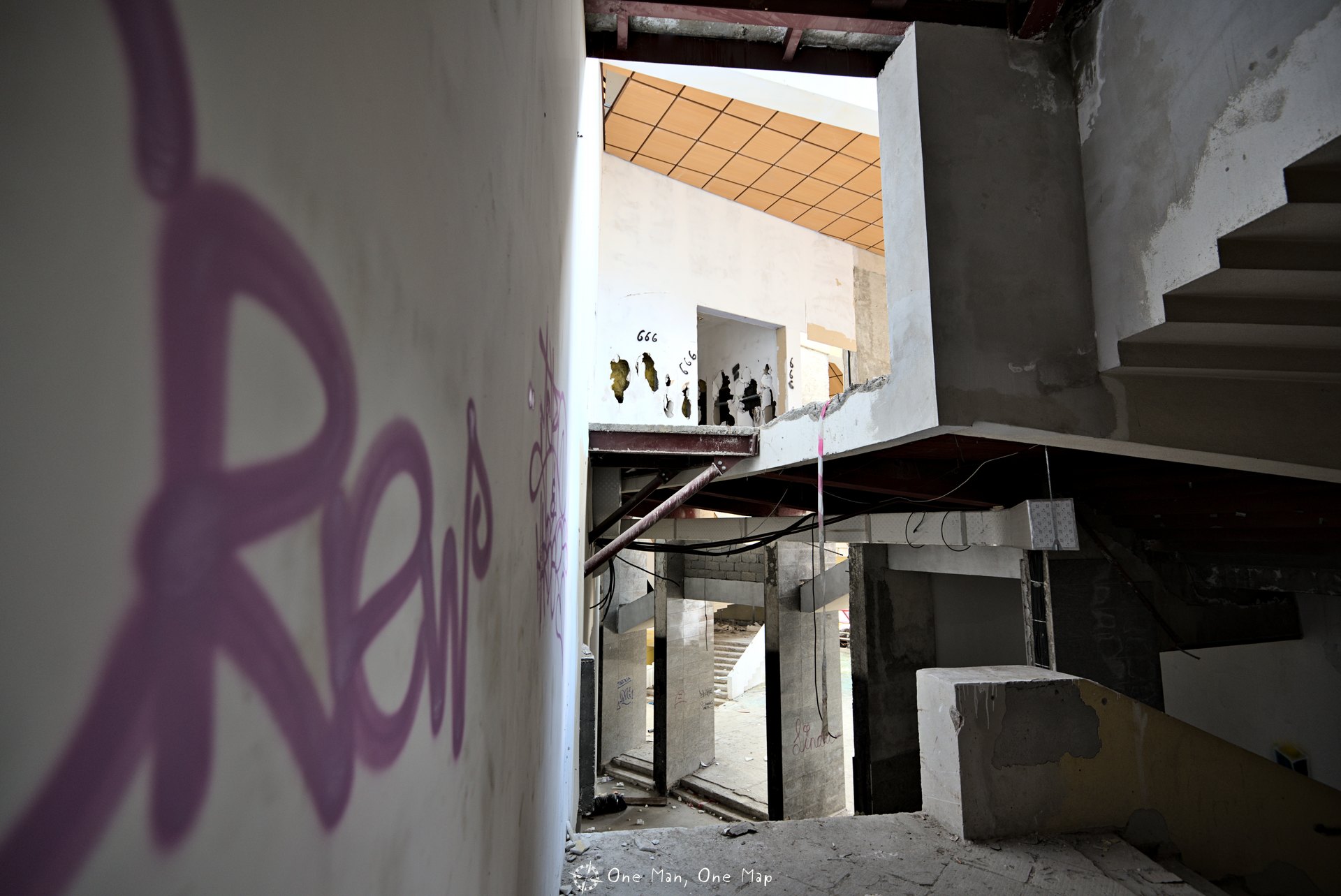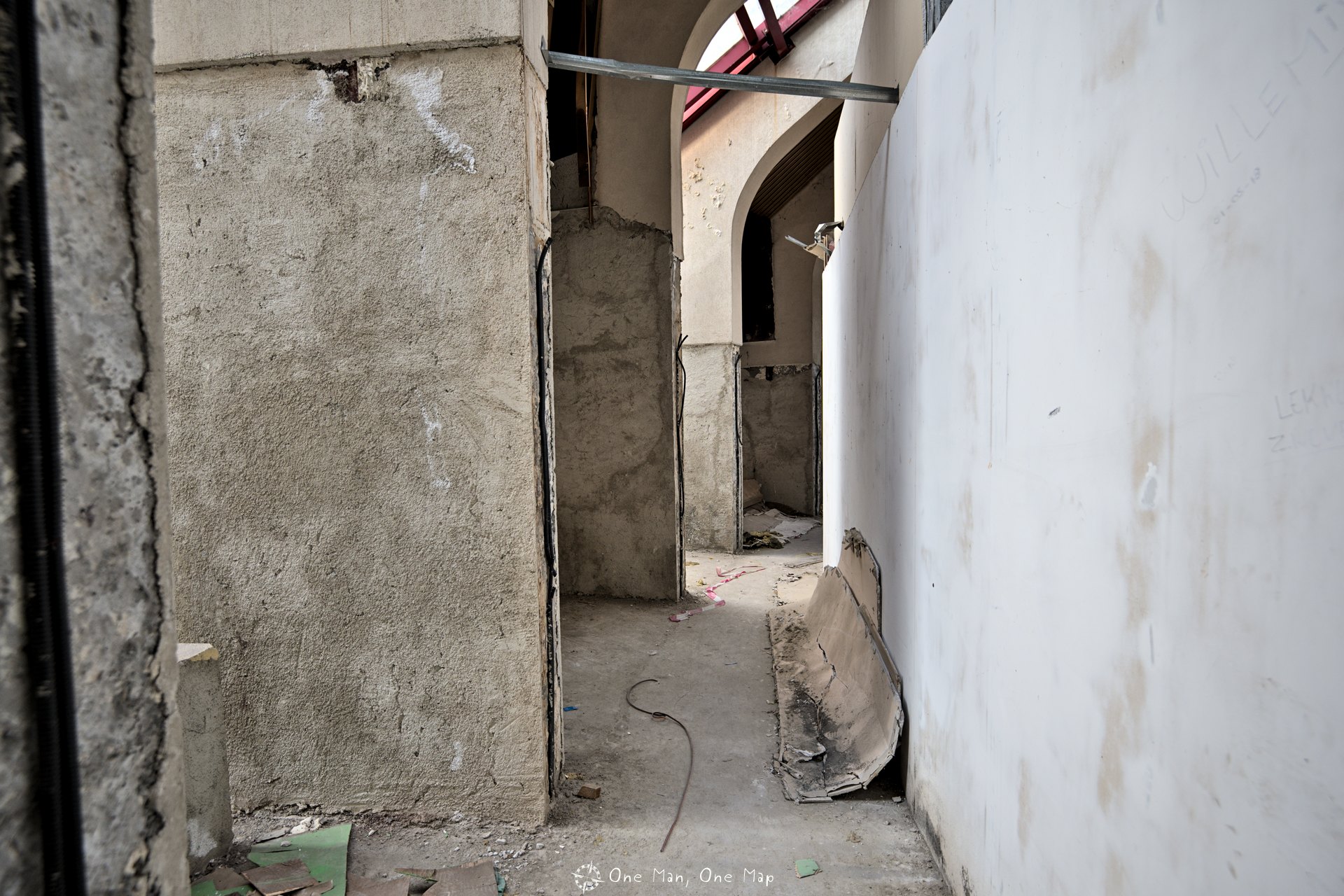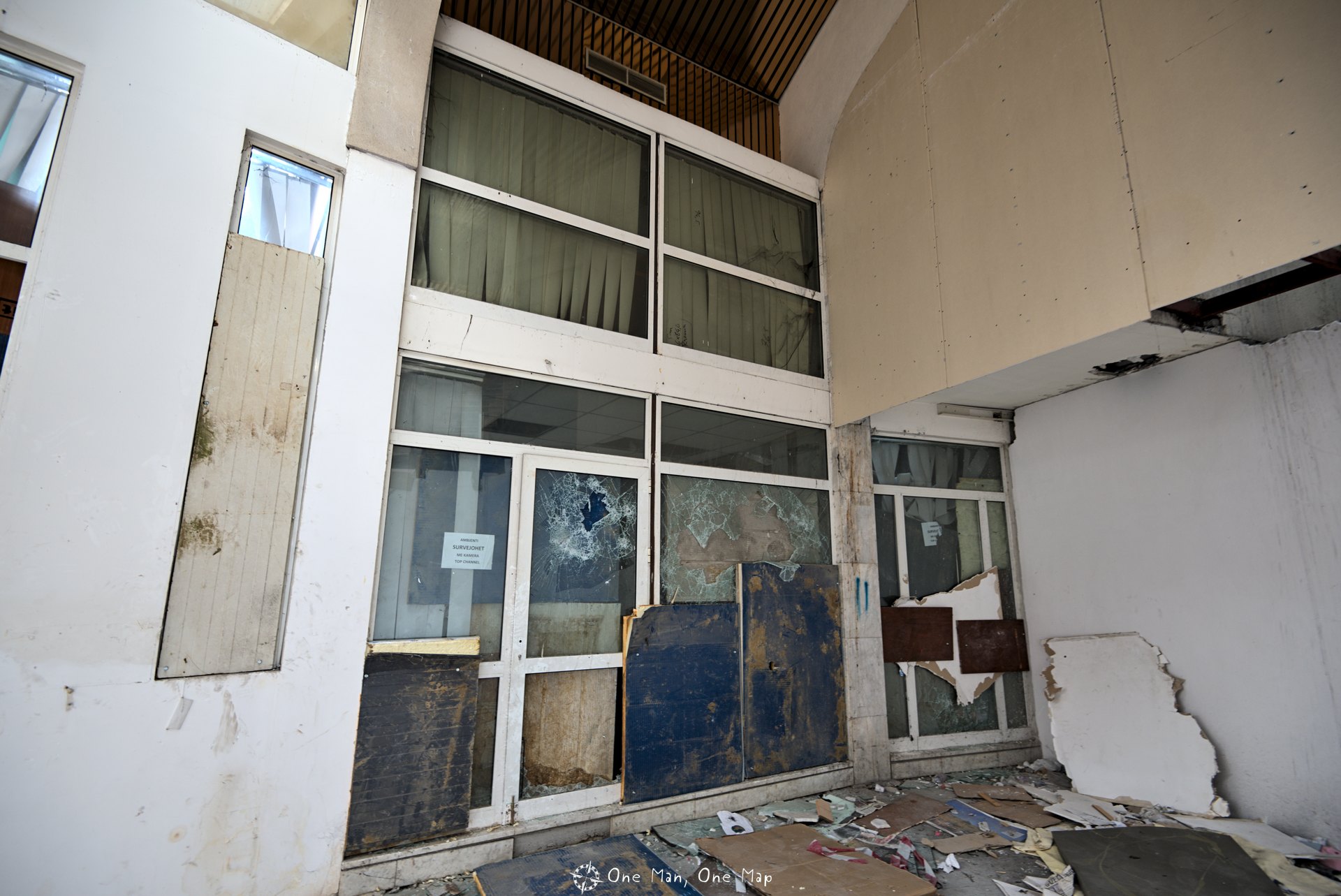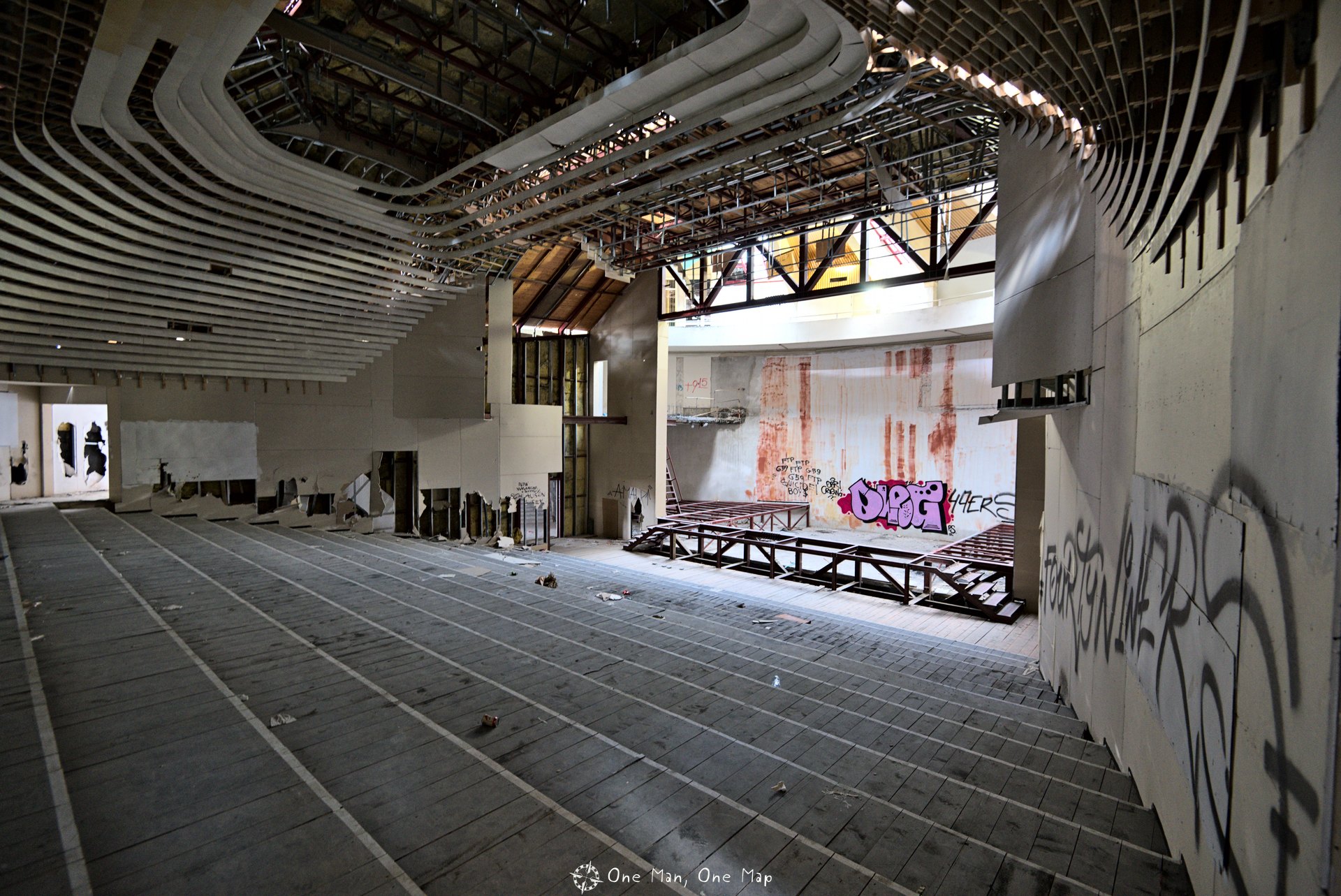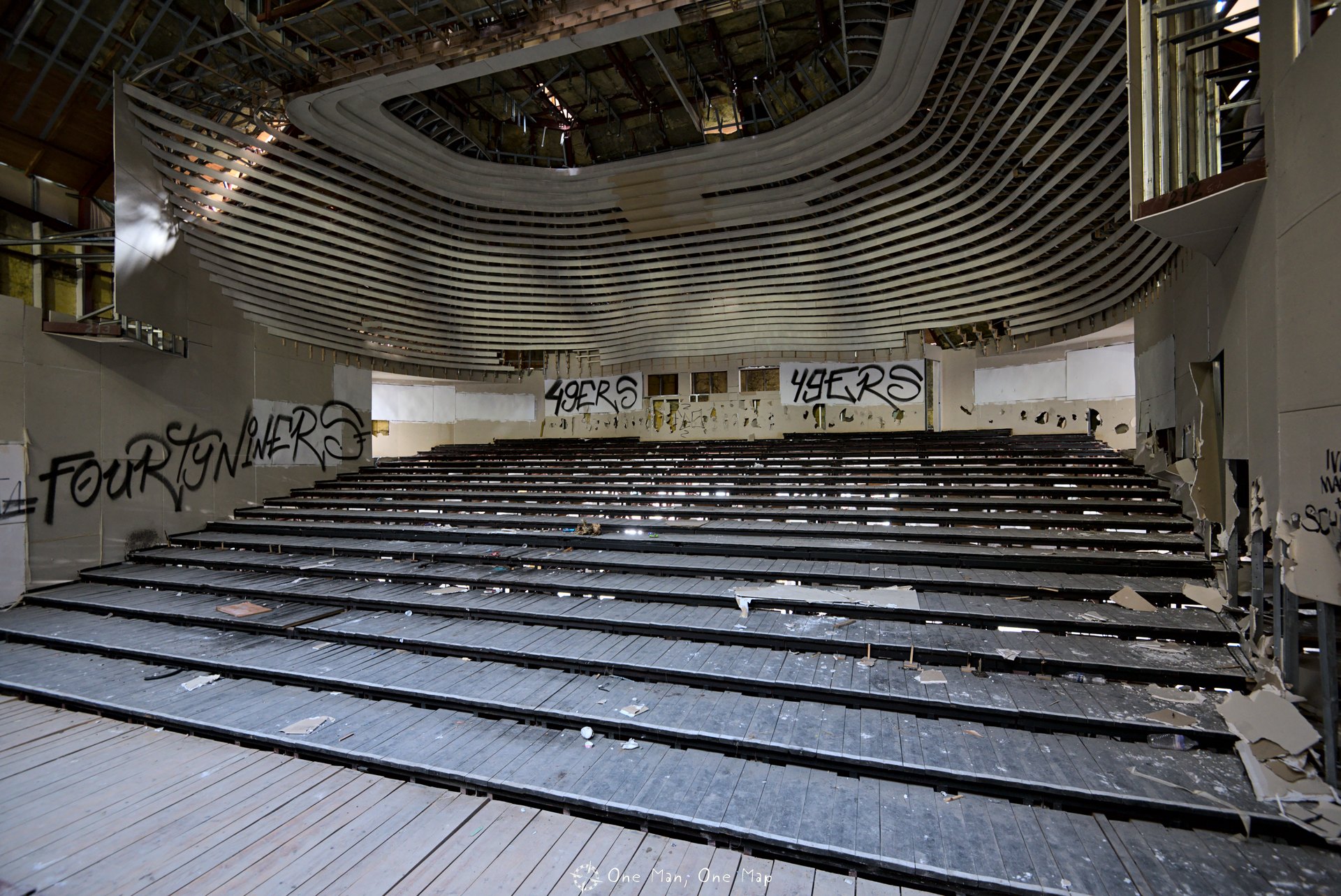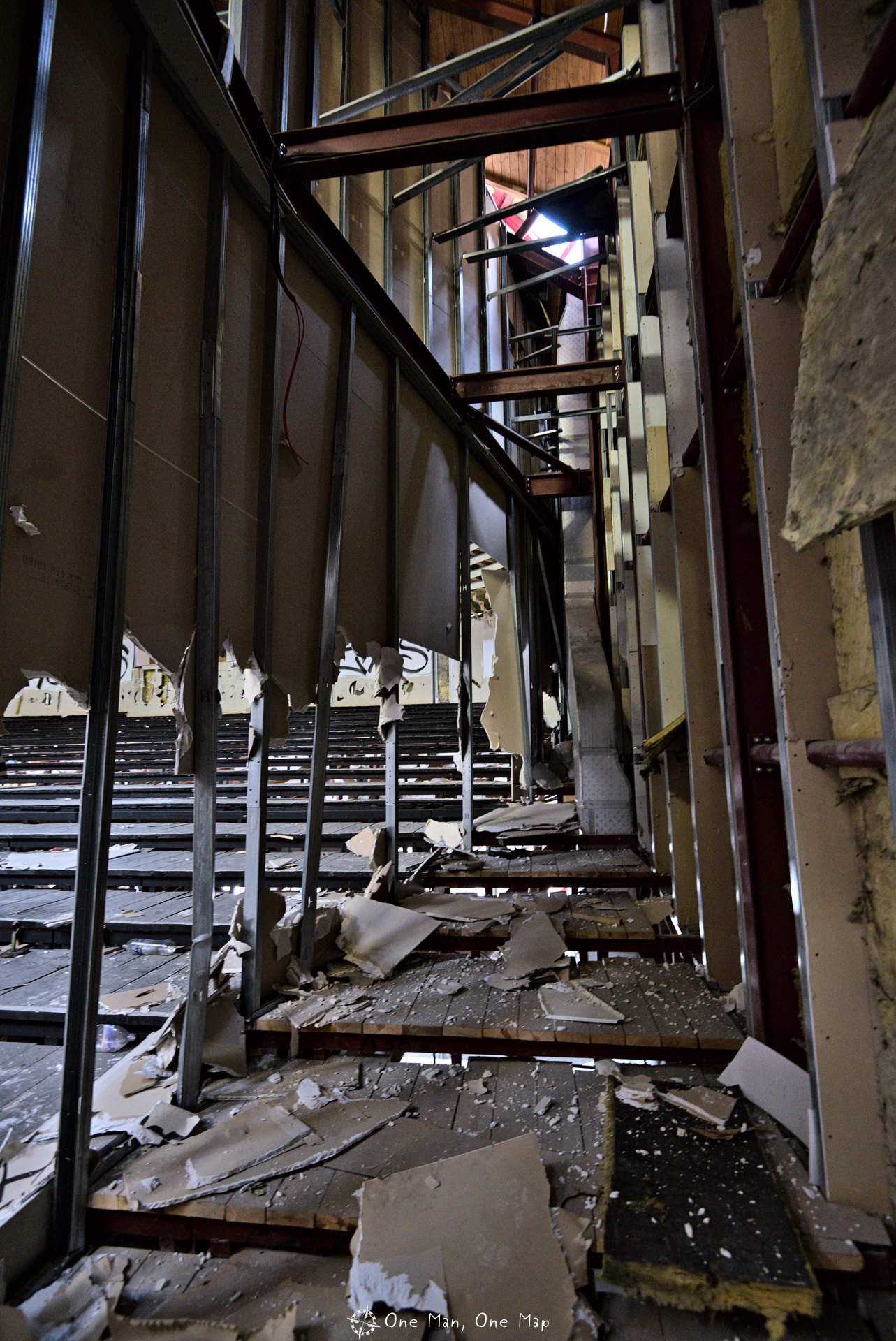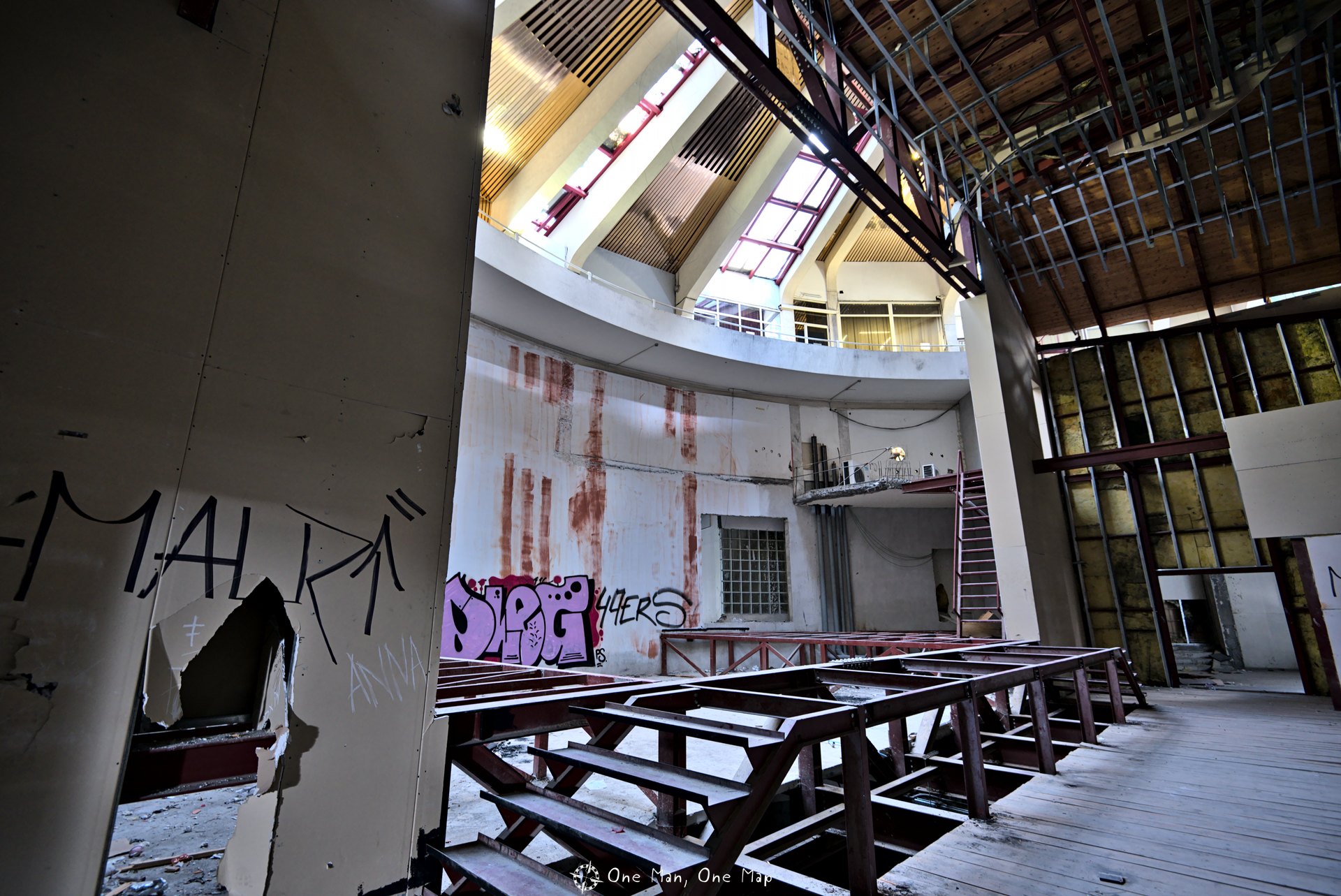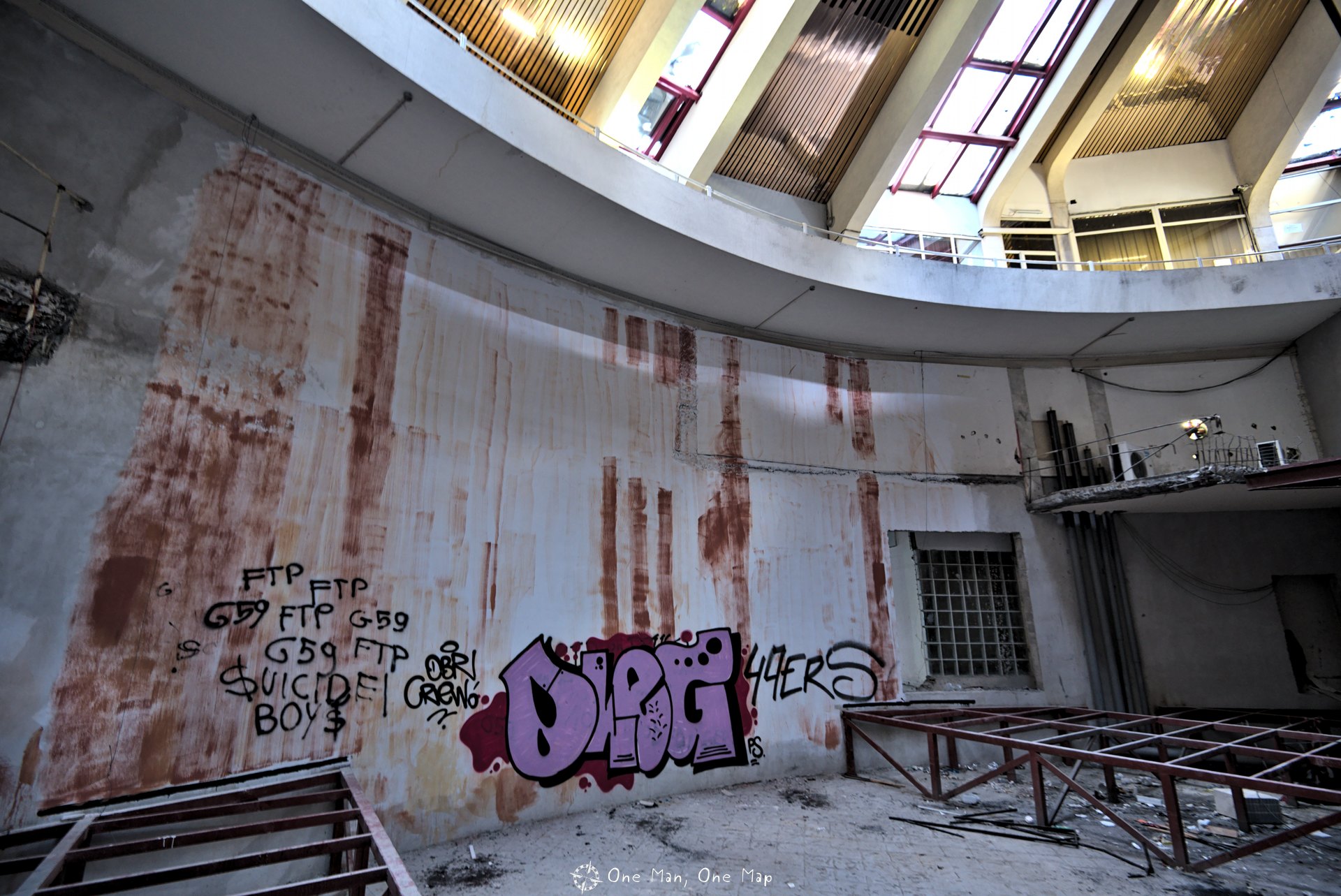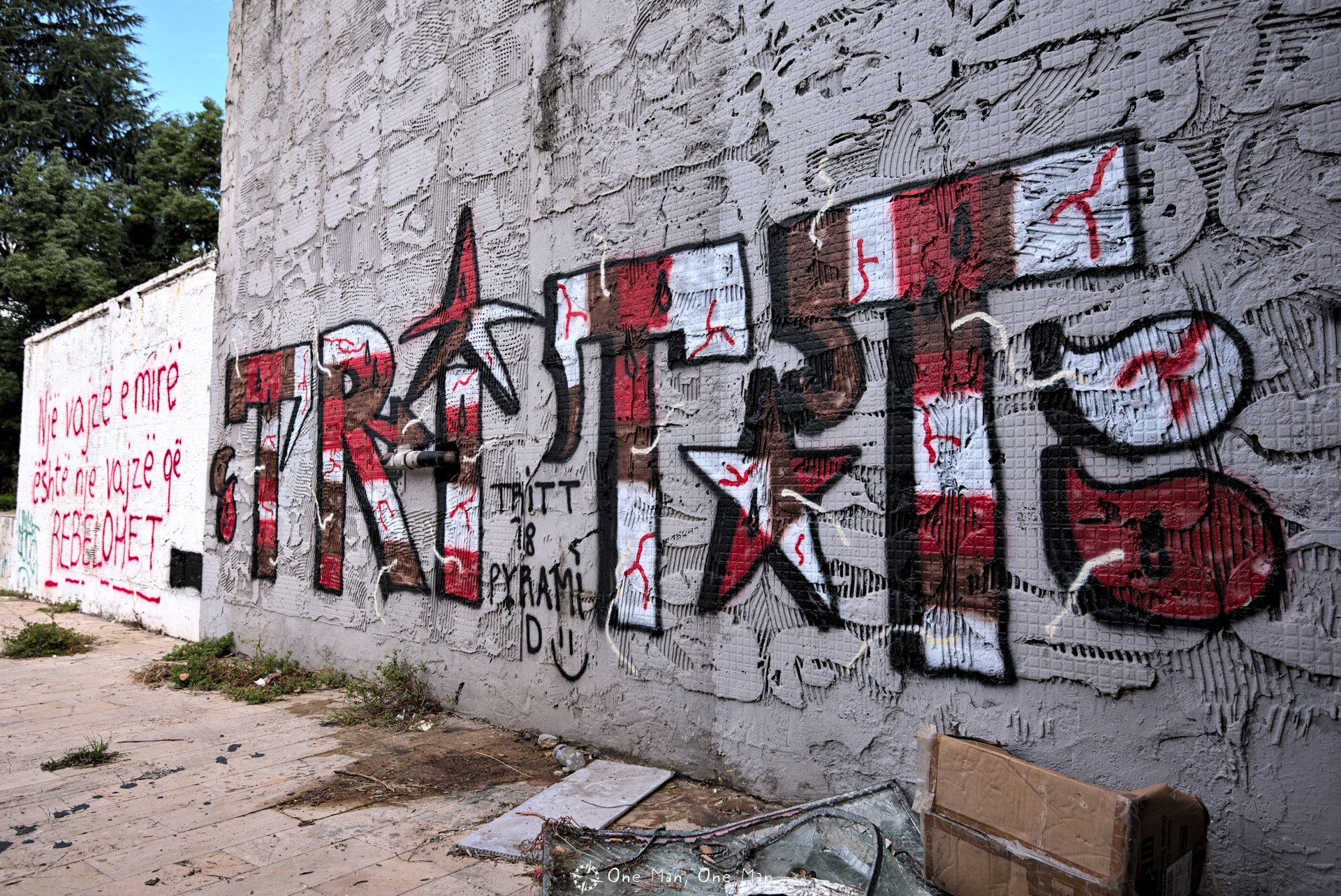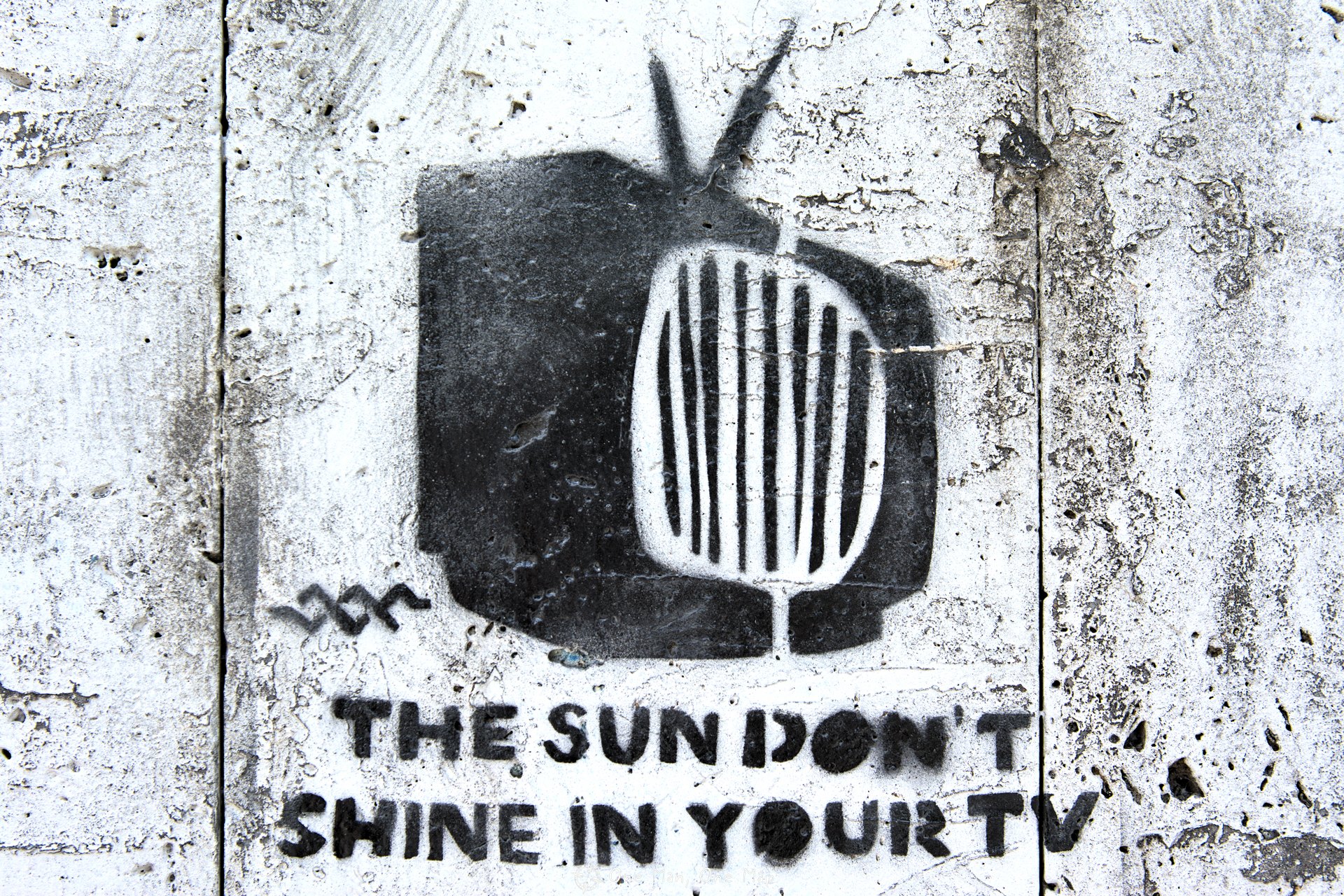Dieser Artikel ist auch auf Deutsch verfügbar. Click here to find out more about Albania!
For an overview on Albania, have a look at the introductory post.
Anyone staying in Tirana can hardly ignore the dictators’ pyramid. The 30 meters high concrete colossus rises from the middle of a huge square and easily dominates most of the trees and buildings in the area. Even from the clock tower at Skanderbeg Square half a kilometer away one can easily see its peak.
From 1988 to 1991 the Enver Hoxha Museum, as the pyramid was called originally, had “more or less everything Enver Hoxha had ever touched”. Architect Pranvera Hoxha, daughter of the dictator of Albania, had planned the building together with her husband after Hoxha’s death in 1985. Construction took two years.
Today hardly anything reminds visitors of the heydays of the pyramid. The bare concrete used to be clad in bright, smooth marble slabs, a popular slide for the children. Even today children still use the pyramid as a giant slide because in Tirana nobody cares what is going on around the pyramid. You definitely won’t run into problems if you dare to make the somewhat dangerous ascent over the bare concrete sides.
Allegedly the pyramid had gotten a new coat of paint in 2015. There was little to see of that, however.
On the top of the pyramid there used to be a big, red star. Today there’s a metal dome instead which can’t even keep out the rain. The only other thing up here is a highly secured radio tower.
From the top one has a good panoramic view of the surroundings, including the peace bell (Këmbana e Paqes) built in 2000. It is a reminder of the Albanian Civil War following the “Lottery Riot” in 1997, which had to be pacified by United Nations peacekeepers. The bell was cast from cartridges collected in Albania.
The restaurant “Mumja” was formerly located In the back of the pyramid. It has remained closed for many years.
The main entrance should be closed, but people continue to rip it open. Everyone can have an undisturbed look around here. Of course we couldn’t resist…
The surname “Enver Hoxha Mausoleum” sometimes used for the pyramid fits the architecture of the building, but is incorrect. Hoxha’s body was never laid out here, but buried in the large cemetery in Sharre in the outskirts of Tirana. In the center of the pyramid there was a marble statue of the ex-dictator in a sitting pose, created by the Albanian sculptor Kristaq Rama.
Kristaq Rama created many more works of art for the communist leadership, including sculptures of soldiers and workers and ornaments. However, the artist also had a dark side: as a senior official of the regime, he signed several death sentences. One of his sons, Edi Rama, is a very successful politician today. He was, among other things, president of the Socialist Party of Albania, Prime Minister of Albania and several times the mayor of Tirana.
We found garbage and broken glass fronts everywhere. It was hard to imagine that this was supposed to be the most expensive building ever built in Albania.
A rather confusing combination of stairs and corridors leads to the higher levels. Until 1991 these spaces housed the museum exhibition, which showed Hoxha’s influence on the history of Albania on three floors. Most of the exhibition consisted of pictures and documents, but there were also vehicles and – quite modern for Alabania at the time – movie sequence and computers. A small library and a café completed the offer.
On the first floor there is a stage with a large auditorium. High-ranking celebrations took place here after the death of the dictator, later on the stage was used by a discotheque. This area has to be entered with great care – the entire auditorium is just made of wooden beams resting on steel girders and hangs freely above the ground floor. In the worst case one can fall several meters through a hole in the floor.
The base stations for the radio tower on the roof are located under the glass windows in the roof. A security guard was on duty up there, but didn’t care about us.
After the opening of the country around the year 2000, the pyramid was converted into an “International Cultural Center” (Qendra Ndërkombëtare e Kulturës). Later, it housed offices of international institutions, bars and most recently the mentioned discotheque. Then came the bankruptcy and decay. In 2010, Parliament approved the demolition of the building by a narrow margin to reuse the space for a new parliament building. The tender for the 110-million-euro project had already gone to an architecture firm from Vienna, the construction work was to be completed on 28 November 2012 for the 100th anniversary of the proclamation of the Principality of Albania .
Due to political disputes with the Socialist Party of Albania, the successor organization of the former dictator’s workers’ party, the project was effectively canceled. Construction never started. After that, several new proposals for further use were made. In 2016, the whole site and the ruin became the property of the City of Tirana, which announced the final conversion into a youth center in 2017. In 2018, the plan was changed to a technology park for startups with a focus on software development and robotics.
Nothing has happened yet. And so the most expensive building ever built in Albania will probably continue to decay for many years to come 🙁
This post was written by Simon for One Man, One Map. The original can be found here. All rights reserved.

